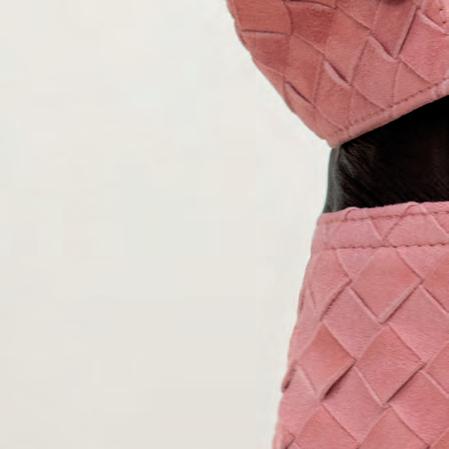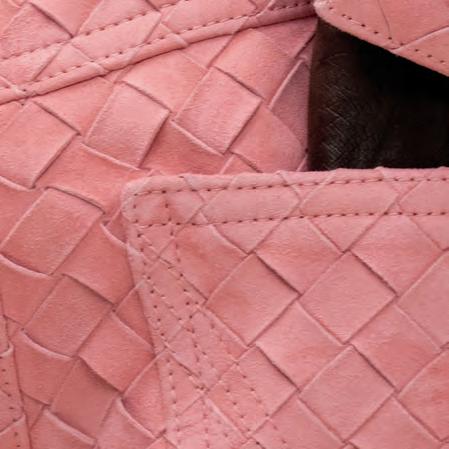






































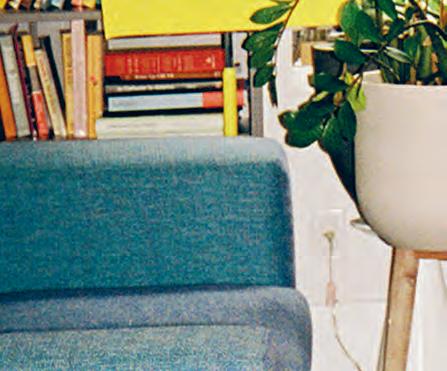



















































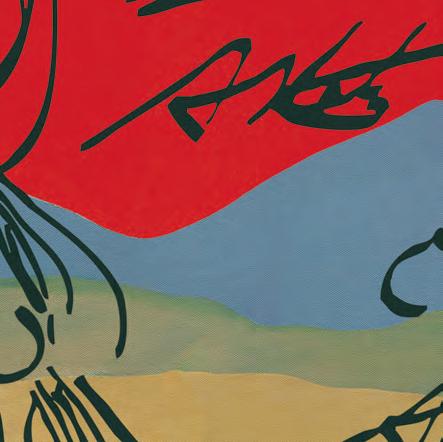













This year marks 45 years since artists founded the Aspen Art Museum and ten years since we moved into our home on the corner of Hyman and Spring, designed by Shigeru Ban.
Such happy anniversary moments mark time, giving opportunity to refect on how many hands, hearts and minds went into making this institution what it is today.
Led fearlessly by the Board of Trustees and National Council, helmed by Co-Presidents Melony Lewis and Amnon Rodan, we have been able to forge new paths for the museum. Their enduring commitment to architects and artists takes physical form in our awe-inspiring building where art lives and breathes. To come to work here each day is a gift.
All of this originates from the brain of a rchitect Shigeru Ban, one of three recipients of this year’s Aspen Award for Art. With deep generosity, resourcefulness and sensitivity to people and place, he has made an indispensable gathering spot for the Roaring Fork Valley community, distinguished by its porousness, fexibility and devotion to art.
Our anniversary exhibition, “In the House of the Trembling Eye,” is a reminder of how beautifully this building showcases painting Staged by Allison Katz and reaching every corner of the museum’s galleries across all three foors, the show brings together more than 100 works of art, incorporating pieces from personal collections in and around Aspen, bridging epochs and styles — from fragments of Pompeian wall paintings, to exemplary art from the 20th and 21st centuries, and paintings by Katz herself. It is a poignant refection on a medium’s ceaseless capacity for regeneration within the frame. Ban’s building, in Katz’s world, becomes another frame for painting.
In celebration of the medium, we are also proud to honor artist Jacqueline Humphries with the Aspen Award for Art. Her pioneering work in abstract painting has reshaped the ways in which we contemplate cultural histories and modern communication techniques.
The weightlessness of music counters these material explorations in paint within the museum’s artistic program. We are so excited to present three performances during Aspen ArtWeek that each take root in sonic explorations, starting with Aspen Award for Art recipient Jason Moran, who will perform a piano and vocal duet on the museum’s rooftop with his partner and longtime collaborator, Alicia Hall Moran.
The following evening, on top of Aspen Mountain, Moran, a restless innovator who has transformed contemporary jazz, will feature as a guest in a collective performance of new music by artist Ryan Trecartin, titled Audience Plant 2024 , which also features Lizzie Fitch, Ashland Mines and the students of the Aspen Music School. Trecartin transforms music made with digital software into live orchestrations, weaving unexpected sonic textures into an acoustic tapestry that pushes composition in new and surprising directions.
Finally, on the morning of ArtCrush, we welcome visitors back to the museum roof terrace for a sound bath by Himali Singh Soin and David Soin Tappeser. The performance merges poetry and gong percussion and promises to transport the audience into new realms.
This anniversary year, our ArtCrush auction, which has been curated by Abigail Ross Goodman and Molly Epstein, is exceptional. With their sharp eyes, the duo has brought together a winning combination of bright emerging and established artists in what remains the premier beneft auction for an American institution. We are enormously proud to share proceeds of the sales with our donating artists, which is a practice that will remain a cornerstone of ArtCrush for years to come. Our new partner, Christie’s, has been essential to the realization of such a remarkable auction.
I am deeply grateful for the support of the gala’s Co-Chairs, this year represented by four brilliant couples: Sarah Arison and Thomas Wilhelm, Eleanore and Domenico De Sole, Jack Carter and Charlie Pohlad, and Jen Rubio and Stewart Butter feld. Aspen is deeply fortunate to receive such unparalleled enthusiasm from our community and our partners, which enables us to ful f ll our unique mission
It is essential that we work alongside artists as they venture into the unknown. To do this, we must continue to build trust and establish deep relationships that transcend the parameters of production timelines or rehearsal schedules. It is here, in Aspen, that we can provide a truly special environment in which relationships can flourish in the deliberate tempo of mountain time. In our work with artists at the museum, we revel in the incubation period of ideas, thinking together about the impossible. This is a special community and we celebrate not only our past but our shared futures.



























Emily LaBarge on the connections woven through “In the House of the Trembling Eye,” an exhibition staged at the museum by Allison Katz and organized in collaboration with the Archeological Park of Pompeii.
The director of the California Film Commission, Colleen Bell, and artist and writer Aria Dean talk about their careers, what excites them in art, television and flm, and their shared love of Aspen.
Liz Lambert and Larry McGuire tell us what’s on the menu at Swedish Hill Aspen, the relaunched Aspen Art Museum café.
The Aspen Art Museum’s dedication to supporting local artists is exemplif ed by the annual Artist Fellowship. Kealey Boyd talked to some of the practitioners across the Roaring Fork Valley who have benefted from this program.
A glimpse into the Aspen home of collectors Jen Rubio and Stewart Butter f eld, who are among this year’s ArtCrush gala co-chairs. In an interview with Xerxes Cook, Rubio discusses the couple’s move to Colorado and their wide-ranging collection.
For this year’s Aspen ArtWeek, Ryan Trecartin and a cast of fellow artists and musicians will take to the mountain top to stage a newly commissioned live performance, Audience Plant 2024 Harry Tafoya traces the history of Trecartin’s collaborations.
The curator of this year’s Aspen Ideas Festival, legendary writer, journalist and editor Tina Brown, talks to Evan Moftt about her eclectic and illustrious line up for the festival and her commitment to “live journalism.”
Architect Shigeru Ban, one of this year’s ArtCrush honorees, designed the building that the Aspen Art Museum calls home. Diana Budds takes a look at his Pritzker Prize-winning practice.
For decades, Jacqueline Humphries, one of this year’s ArtCrush honorees, has been challenging the scope of painting. Michelle Grabner charts the evolution of the artist’s work.
Musician and artist Jason Moran, one of this year’s ArtCrush honorees, will present two performances this summer during ArtWeek. Ian Bourland examines the work of this seasoned collaborator.
Explore some of the artists generously donating works to the ArtCrush 2024 auction.
Design Miami co-founder Craig Robins and his partner, Jackie Sofer, talk about the joys of collecting design and art.
Terence Trouillot looks ahead to shows at the museum by three rising talents: Shuang Li, Jasper Marsalis and Heji Shin.
Artist Lena Henke models the Stetson she designed exclusively for the Aspen Art Museum — one of a number of collaborations with our community of artists available in the museum shop.









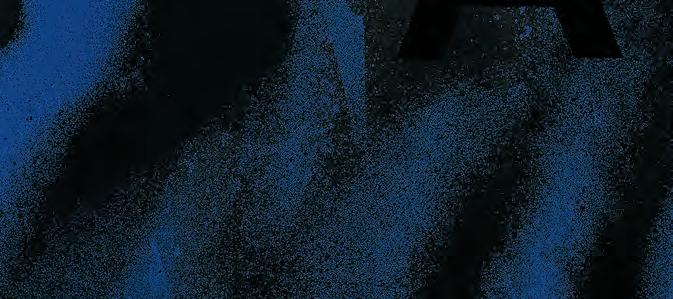




















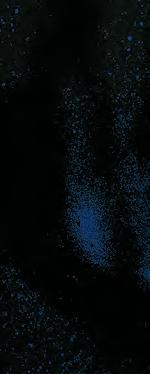





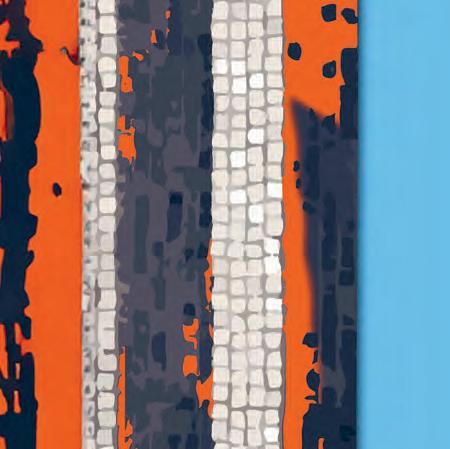

















Allison Katz’s expansive “In the House of the Trembling Eye” assembles the artist’s dazzling paintings with those from private Aspen collections and special loans including fragments of frescoes from Pompeii. In a theatrical display at the Aspen Art Museum inspired by ancient domestic spaces, the exhibition presents Katz’s vision of painting as “a call and response, a question posed across time.”
The museum is an exhibition space, an ancient Pompeiian house (“domus ”), an archaeological site, a contemporary resurrection, a series of mirrors and refections, a mise en abîme, a homage, a conversation, a continuum, a bounded area — with four sides, sometimes more — f lled with paintings. This is, in fact, remarkably similar to making a painting and to painting in general: the question of how to organize space.
At Aspen Art Museum, Allison Katz has curated (I use the term loosely, as she prefers to call the act a “staging”) a nuanced and astonishingly varied exhibition that ofers deep, creatively generous and open-ended proposals about what it means, both in the past and the present, to construct an image.
“Painting is for me always a question hollered across time and traditions, to see who and what answers,” Katz said in our recent discussion, “as if to test
the idea that painting is a conversation.”
The show is titled “In the House of the Trembling Eye” — a poetic phrase that layers (palimpsests? collapses? explodes? melts down and fuses?) associations of the well-known remote mountain town and its trembling deciduous trees with a famous mountain and its well-preserved denizens on the other side of the world: the ancient site of Pompeii. Through nine rooms, the trembling eye roves and judders, saunters and alights, keeps looking and looking at painted surfaces of all colors and sizes, textures and ages, following Katz’s intricate web of red threads that stretch between works both ancient and modern, all of which hail from the Archaeological Park of Pompeii or from the private collections of the museum’s near neighbors.
In her studio on a chilly Saturday morning in late April, Katz shows



me her elaborate scale model of the exhibition, which enacts or stages — in a kind of “psycho-architecture” — the di ferent spaces of the traditional Pompeiian home. “Stage” is a word that we both use often in the long and fowing conversation that follows, along with theater, mask, performance, identity, intimacy, private, public — themes and realities familiar to any person from any time. But they are particularly relevant to the interior spaces of the domus, which were constructed to refect di ferent purposes, customs, activities and power dynamics. Plus ça change, one might say — even in our era of open-plan layouts. But, for Katz, the organization of space also mirrors the questions and concerns of painting: what do you do with/what happens inside/how does a body (or an eye) move around this space with its f xed parameters? Does it embrace the real or the illusory, the plain or the decorated, the f gurative or the abstract? Does it straddle all of the above to push against spatial and pictorial expectations — break the walls down?
I place my head close to the model and peer into each room as Katz vividly describes it: the street (from which you can see directly into the center of the house, where its patriarch sits elevated), atrium (courtyard), tablinum (ofce), triclinium (dining room), peristyle (enclosed garden), cubicula (a personal favorite: curtained sleeping pods sometimes also used for meetings, trysts, murder or suicide), culina (kitchen). As the project started with Pompeii — where Katz visited as part of Pompeii Commitments, a program that hosts artists, curators and researchers on site — so does each room, only to quickly go elsewhere. (This, too, is how vision works, darting near to far, around and back, sometimes stopping to dream in the middle-distance.) The rooms are like stanzas in the poetic sense — they don’t illustrate or argue but gather thoughts and images to hang and jostle and rub together in tension and a f nity, producing a di ferent experience for each witness.
Looking closely, imagining walking from street to atrium to culina to cubiculum , I glimpse familiar works, some close to my heart: a Paul Thek trio of f ames sinking into lapis waters; a pale Joan Mitchell triptych raucous at its center with dark green and feeting f ames of crimson, yellow, magenta; an early Alice Neel drawing of the artist nude on the toilet while her similarly exposed lover urinates into a sink that seems to foat unmoored from the wall; an Ed Ruscha gas station silhouetted against a sky of glowing reds and oranges; Marc Camille Chaimowicz’s wallpaper in chalky pastels; a Cecilia Vicuña painting of legs studded with breasts (or bulbous eyes?) foating against bright yellow and orange striations; a plaster leg, hip to foot, by Alina Szapocznikow. I could go on and on: in f nite riches across many rooms.
Amid these works and others that span primarily the 20th and 21st centuries (with one piece from the 17th) are scattered fragments of wall frescoes and objects from Pompeii (Narcissus and his refection, a group of men, a leering satyr, a cheetah chasing a fawn, a strangely geometrical stone thumb) and numerous paintings by Katz herself that deal with openings, frames, faces, authorship and enigma.








My mind skips through Warburgian associations, linking images through pseudomorphism (a line here matches a curl there, hues echo across canvases, framing devices repeat and invert, animals and fgures and faces leap and perform and sometimes look straight out at you), as if each room has somehow dreamed its contents, exhumed from somewhere between Aspen and Pompeii, between Katz’s studio and her staged domus interiors. Art-historical, painterly and thematic preoccupations would ofer di ferent routes through the house, which is also the gallery, as would a viewer’s own associations. As the artist avers, this is a show distinctly not about taste. “What does it mean to look for the continuum in painting, and to express, in an exhibition format, the inexhaustibility of the painted surface?
To communicate across time, in a poetic logic, similar to Virginia Woolf’s def nition of poetry (‘a voice answering a voice’)?” Katz asks. The answer is a chorus.
In 79 AD, the 20,000 inhabitants of Pompeii knew they were living on the edge of Mount Vesuvius, but they didn’t know it was a volcano, and that it would soon begin to tremble and destroy everything in its wake. Today, we live in a constant state of looming catastrophe and impending doom (climate change, nuclear war, you name




it), enthusiastically broadcast. These devastations do not promise immaculate preservation, as was the accidental efect of the eruption of Vesuvius, which froze everything — including 1,150 human bodies — precisely where it lay. “The Pompeiian fragments bring me consolation. Painting from 2,000 years ago that looks like it was made today. The fragment as a form in itself brings me consolation,” Katz says. The Pompeiian fragment is a form of painterly continuity and a reminder of what is at stake while we are alive because this time, after the eruption, there may be nothing left for any artist, curator or archaeologist to piece together. But here and now we have the canvas.
The penultimate and f nal rooms of “In the House of the Trembling Eye” escape the con f nes of the domus into rooms titled “Eruption” and “Gradiva.” The former is hot and wild, teeming with reds (Anish Kapoor, Lucio Fontana), fying and smeared multicolored chaos (Julie Mehretu, Gerhard Richter), ominous f ssures (Katz) and almost a dozen other eruptive images, both abstract and fgurative. The latter is cool and spare, dominated by Katz’s large painting of a walking woman in silhouette, her form multiplied like a stop-motion kaleidoscope. She is Gradiva (2024),



or “she who steps along,” “a woman who walks,” “the one who advances,” a Roman goddess who inspired the Surrealists and for Freud symbolized psychoanalysis as a cure for love.
I think of her here as the visitor, the curator, the artist, the painter — consoled by fragments and elated with combinatorial agility. She walks, keeps walking, through the domus, the gallery, the canvases and beyond.














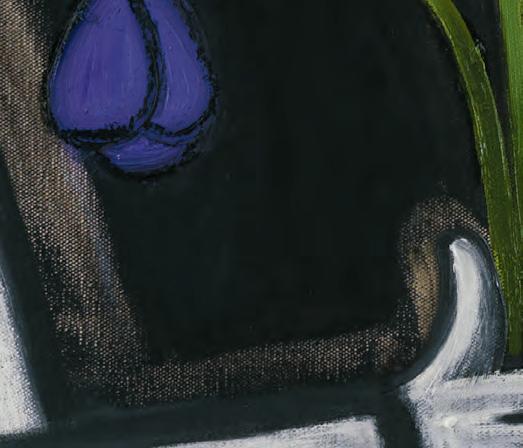









Aspen is a place where extraordinary encounters happen. After her first visit to town, artist and filmmaker Aria Dean spoke with entertainment veteran and long-term resident Colleen Bell. The two share their multifaceted careers, diverse passions and future plans.
ARIA DEAN
I was born and raised in Pasadena, California. I grew up in a production family: My dad’s an assistant director, my mom’s a producer. All of their friends were in the industry and it was the height of the music-video era and MTV. I worked as a costume assistant when I was in college, but my parents really encouraged me to f nd my own interests. I always did art stu f I painted, drew and wrote a lot as a kid and I ended up going to Oberlin College. I studied art and philosophy and just stumbled into the art world and went on to work in numerous places in my 20s.
COLLEEN BELL
I’ve been in Los Angeles for 32 years. I went to college in Virginia, with a spell at St. Andrews in Scotland. I was working on Capitol Hill and I had traveled to various places in the world, but I had never been to California. Then I re-met my childhood sweetheart who was in LA launching a new soap opera, The Bold and the Beautiful, and he proposed marriage right away.
The show was just getting of the ground, so it was all hands on deck and, although it felt a little of my career trajectory, I went to work for the production company. So, I was producing and my husband was a head writer. This was the moment that the international markets were opening up, and we found that soon our little half-hour daytime drama was being seen in 110 countries around the world, with over 150 million viewers.
The social activist in me thought, “Wow, what a platform to educate people, build social cohesion, and to promote peace and prosperity.” To give just one example, we had many viewers in Africa and it was when the AIDS epidemic was raging through the continent. We would tell these long story trajectories, weaving in information about HIV prevention.
When we had our fourth child, I decided to take a leave of absence and asked myself what had I always wanted to do but hadn’t had time to pursue, and that was to work on toxic chemical reform. The NRDC [Natural Resources Defense Council] was doing the best work in the nonproft space on this, and so I reached out to them and ofered to volunteer. They sent me to Washington, D.C., where I met Senator Barack Obama in the second month of his f rst term. Then one thing led to another, which brought me back into government work. I was with the Obama administration and my f nal position was as the US ambassador to Hungary.
Now I work for the Newsom administration, in the governor’s ofce of business and economic development as the director of the f lm commission. I am happy to be working somewhere where I feel like my values completely align. This is a state of dreamers, somewhere that doesn’t only recognize but celebrates our cultural and ethnic diversity as one of our great assets. I love being in California.
AD Yes, lately I’ve been missing California more than ever, not just the sun but the California attitude, the way people interact.
CB There is def nitely a large community of creatives here. And something I’m excited about at the moment is this even stronger belief that art and f lm have the ability to build social cohesion, promote peace and unify people around the world. With my portfolio as f lm commissioner, I’m not making the
f lms, but I’m taking great pride in all of the extraordinary content being created in f lm and television here in California. It gets beamed all over the world and keeps Californians working, doing the jobs that they love to do.
I think our country, unfortunately, is experiencing a moment of such deep polarization. But in a museum or movie theater, we’re all there experiencing art and enjoying the opportunity to be together.
AD On a personal level, my focus right now is on f nding a way for art and f lm to really exist together. For the last six, seven years, I’ve been making video work and sculpture largely in the context of the art world. Last year, I made a short f lm that f nally had a life both in the art world with exhibition formats and also on the festival circuit.
I am interested in reaching a wider audience, and digging more into the language of f lm. What it can do, what it can make people feel, is very exciting to me. But they’re not mutually exclusive industries, there’s a way to really straddle both and to make things that can live in both spaces.
CB Film has the ability to provoke conversations about pressing issues such as poverty, war, racism and gender inequality.
My cousin, Bradley McCallum, is a conceptual artist and social activist. He addresses trauma and struggle and racial identity. His work includes large public projects, sculpture, video and photography. I’m inspired by what he’s doing at this moment in time, mixing all of those disciplines together to address some really pressing issues.
Incidentally, I went to the Ed Ruscha opening at LACMA last night, and it felt like such a powerful California experience.
AD It’s funny, Ruscha is alive and well, of course, but I have a tendency to be very in fuenced by a lot of dead white men. My all-time favorite artist, although I cooled on it a bit, is Robert Morris, who passed away a few years ago. He was known for hard-edged minimalist sculptures, but through performance, video and f lm he also really engaged with his own subjectivity as a white American man, inhabiting caricatures of the gangster, the cowboy, the intellectual. A lot of this work was happening during Vietnam and the anti-war and labor movements in New York City, and he was actively organizing artists in relation to these through projects like Art Strike. I think he’s a reminder of how one can not only comment on or work through political stu f in one’s work, but also be part of a community of people thinking about those things.
A really early love of mine is Senga Nengudi. She has been a sculptor since the 1970s and raised interesting questions about making abstract work as a Black woman and about what it means to make art as a Black person in America. What are you supposed to be doing? Are you supposed to make f gurative work? Is abstraction a tool that is interesting or useful?
I’m also really in fuenced by a lot of maybe dry, experimental f lm work from the 1960s and ’70s, like that of Michael Snow, who passed away last year. Stu f that may seem very dull to watch but is riveting in some ways.
Also Ti fany Sia, a great artist and f lmmaker who did a lot of work around the Hong Kong protests a few years ago, and is interested in the
Aria Dean, King of the Loop, 2020, installation view, Made in L.A. 2020: a version Hammer Museum, Los Angeles, 2020. Courtesy: the artist, Greene Naftali, New York, and Château Shatto, Los Angeles. Photograph: Joshua White / JWPictures. com
ED RUSCHA / NOW THEN, 2024, installation view, Los Angeles County Museum of Art, 2024, Museum Acquisition Fund, © Ed Ruscha, photo © Museum Associates/LACMA
Active worksite of Judy Baca, The Great Wall of Los Angeles , 1976. ©SPARC 1983. Judith F. Baca and the SPARC archives. Photograph: Linda Eber









histories that involve China, Hong Kong and activism. We’ve been talking to each other a lot lately about ways to look at history and incorporate speci fc and perhaps lesser-known moments into f lmmaking in the art world.
CB I’m inspired by Judy Baca — by her large murals, how she brings together members of the community to participate in the experience of making art, and her depictions of California. I also think the work of Louise Bourgeois is extraordinary. I was reading a book about her recently: she’d have to wait until her kids went to sleep at night to go into her studio and make her art. It’s something I can relate to, being a working mother of four kids. I write a lot, including a lot of speeches. When the kids were little, I would write at night: that’s when the house was quiet and I could make a cup of tea and get creative. They are older now, but those quiet, productive moments after very busy days are a nice memory.
AD In television, I’m a religious watcher and rewatcher of the show 30 Rock, with Tina Fey and Alec Baldwin, which is maybe random, but I watched it as a kid and I watch it all the way through probably once, or maybe even twice, a year. I think it has some of the best writing in television, and most inventive narratives. It’s full of riddles.
On the f lm side, I’m really interested in Rainer Werner Fassbinder’s career. His f lms ask aesthetic and political questions about the history of popular and arthouse cinema and melodrama, and the way the state interacts with the media; he wraps all this in interesting, personal narratives. I also really love the Korean f lmmaker Hong Sangsoo, whose f lms are almost like little drawings of people hanging out.
CB For me, Quentin Tarantino is an extraordinary f lmmaker. He’s so pure in his approach and his characters are rich and complex. He’s going to be shooting his tenth and, he says, f nal project, here in California. It’s in our f lm and television tax credit program, which I administer.
I think Greta Gerwig’s approach to f lmmaking is so clever, creative and bold. Barbie was a marvel in so many ways. It really got people back into the theater.
AD I f nally saw her Little Women I feel like there are few f lms made today that I would call delightful, but that is one of them.
I am curious to know more about the f lm and television tax credits you mentioned.
CB Well, there’s a lot of competition out there for California — many places in the US and other countries that are trying to lure production away from here. So, we are always asking how we can improve our competitiveness, and one way is our f lm and television tax credit program. One of the primary deciding factors for executives when choosing where to shoot is whether or not they’ll be able to receive tax credits. So, this is really an economic development tool to encourage productions to stay in California, which, of course, then translates into job sustainability and economic growth.
AD I am interested in various tax credit structures, and I know very little about most of them. In the f lm industry, people are making budgets and contracts and getting permits, while this is all so vague and unclear in the art world. When I was working in development at an artist’s f lm
company, it was the f rst time I realized the disparity and just how unstructured the art world is in terms of f nancing and even contracts. The distribution and rights structures in each industry are also very di ferent in a way that I f nd fascinating.
CB In the entertainment industry here in California, there’s a lot of policy and legislation that supports the growth of the community. Also, you have all of the labor unions that are advocating for the various groups.
At LACMA, we’ve undergone a major new building project and capital campaign. We had set ourselves such an ambitious goal, and it has been really wonderful how many people from all di ferent sectors have come out in support, recognizing that bricks and mortar still count and that people want a place where they can come together and have a shared experience. That, I think, bodes well for the future of institutions.
AD I went to Aspen for the f rst time a few months ago to give a talk about John Chamberlain at the Aspen Art Museum. I had no idea what to expect, but it was just so beautiful and calming. And the community there, especially at the museum, was equally nestling — so warm and welcoming. Very rarely when I give a talk somewhere do I think, I want to go back there, but it was so amazing. What a cool place to have expansive conversations! I feel like it’s the perfect place for that.
CB We go way back with Aspen. My dad, who’s 84, still skis Aspen Mountain and hasn’t missed a season there since 1954. Aspen is my happy place. We have a house right on the river and with all those negative ions coming of, it’s the most relaxing place for me anywhere in the world. And, of course, I love the community. It’s international and the people living there, both full- and part-time, all come together to support music, f lm, art and sporting events. You get everything you need in one small town and there’s never a dull moment.




This
was


















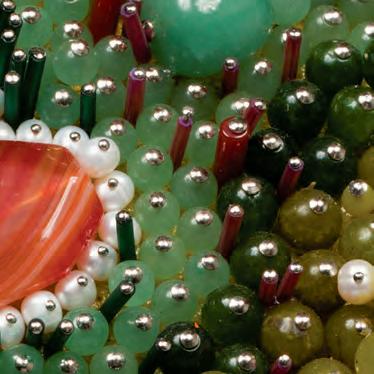



























PATRICIA ISABEL ESCÁRCEGA
Larry, can you begin by telling me a little bit about how the partnership with the Aspen Art Museum came about?
LARRY MCGUIRE
We’ve had businesses in Aspen for six or seven years now, including Clark’s Oyster Bar, so we have forged some good relationships here, and through friends and people on the museum’s board, we began conversations about how to revamp the restaurant on the roof.
PIE Can you talk about the concept, what the menu will look like and any design features?
LM We’re dipping into an existing concept that we have in Austin, called Swedish Hill, which is a really
well-known local bakery, open since the 1970s, that we bought fve years ago. We evolved it into more of a grand café, an all-day hangout.
In terms of design, we’re def nitely not trying to reinvent the wheel with this project, but to do something that accentuates the architecture, celebrates the views and embraces the airiness of the rooftop patio.
We want to make the restaurant a fordable and accessible to the whole town, and keep it healthy, all without compromising on quality. In the mornings, it’ll be a great place to have good cofee and baked goods that we’ll produce at our bakery, Louis Swiss, down in the valley. We also really want to utilize the farmers’ market that
goes all summer, starting in June, which is right in front of the museum. We’re excited to have a seasonal, produce-driven menu, with handmade pastas, salads and sandwiches. We hope to be a great museum café. There are good examples emerging around the country, and we are trying to create something that locals will want to come to on a daily basis.
LIZ LAMBERT
Who doesn’t love a museum café?
PIE I love a museum café — and don’t get me started on the gift shop! But yes, the museum is free, so it’s really accessible, and anybody can come just to have lunch.
LM Exactly, the museum’s always free, which is pretty unique, considering
the world-class programming and architecture. It deserves to have something great upstairs that also serves the community.
LL I was just there and saw the John Chamberlain show, which was really remarkable.
PIE You’re both known for running very successful companies on your own, so I’m curious about the collaborative process between the two of you.
LL Larry and I have known each other for a long time. MML Hospitality was born in 2021, when I joined with Larry and Tom [Moorman], who had already been working together since 2009. And now we all work on restaurants and hotels together.
Also, before that, Larry and I had started Lambert McGuire Design, because we are both heavily involved in the creation of our brands and places, and so we wanted an in-house team.
PIE Since both of you are so closely identi fed with Austin and West Texas, I’m curious about how you approach projects elsewhere. Larry, you touched on the menu and working with seasonal ingredients, but is there any shift in philosophy or change in your approach when you’re working somewhere like Aspen?
LM We haven’t spread all over the place. We stayed in Austin for a long time before we started growing outside of it, so when we go somewhere, we really have to enjoy spending time there. When we started coming to Aspen for Clark’s, we rented a house and started skiing; now Tom and I both have second family homes here. We often come to Aspen together and also separately. Liz now comes up and skis. Aspen has always been a great ft for us and we’ve really gotten to love it — the outdoors, the people, the art scene.
LL It was the home of Hunter S. Thompson and Thomas W. Benton — it has a long history as a rowdy, nonconformist place.
PIE I know you have other projects here. Can you talk about what’s in the works for you?
LM We bought the Aspen Chalet about four years ago.
LL We’ve been working on it for a couple of years, so we’re excited to see it kick of. I think we both love hotels and restaurants that change neighborhoods, become an anchor.
PIE One of the themes I see in your work is restoring the hotel and the restaurant into more of a community space.
LL We like places that feel alive, and maybe the only way for them to really feel alive is to infuse them with community and reasons for people to go and gather there. We like places where you can bring your whole family and which kids will love, too.
LM We don’t love newness, but I think we try to bring something new to our projects. There’s a certain worldclass quality that we’re after, from big metropolitan areas, but we usually choose to work in smaller places.
LL And the Aspen Art Museum project is very exciting for us. We do a lot of going into older buildings that are not at their best, so it’s really great to go into such a beautiful space.

Every year, the Aspen Art Museum’s Artist Fellowship supports local artists, providing mentoring, resources, community and a public platform to Roaring Fork’s finest. Kealey Boyd reports.
When artist Sam Harvey arrived in Aspen in the 1990s, he encountered a cadre of artists doing wildly experimental and interesting work. Despite having very little money, in 2005 he partnered with fellow artist Alleghany Meadows to open Harvey/Meadows Gallery. They both knew the artistic community from working at Anderson Ranch Arts Center, and Meadows had a space at a local farmers’ market selling ceramics, so, as Harvey shared, regarding prospective collectors, “we had a foothold.” Many years later, the business partnership ended and the space was renamed Harvey Preston Gallery, but Meadows remained as a represented artist and Harvey continues to guide the gallery.
Creatives arriving in Aspen today encounter the same artistic vibrancy, but varied pathways to exhibiting in commercial venues. While the town has enjoyed the benefts of recent cultural investments, limited commercial space has narrowed the scope of galleries and project spaces. Local artists turn to nonprofts like The Art Base and Red Brick Center for the Arts to exhibit, and are extending both living and working spaces across the greater Roaring Fork Valley. “To be an artist is a ton of work,” said Harvey. “You have to make the work, let people know about the work, and go to events where you can meet people to talk about the work. It’s a contact sport.”
Artist Teresa Booth Brown agrees. When approached by the Aspen Art Museum to propose ways the institution could support local artists, she “came back with a list!” The concept she put forward for a fellowship encouraged direct engagement between artists and the museum’s community while ofering a suite of programs that were not available elsewhere for artists. In 2018, the Aspen Art Museum Artist Fellowship welcomed its f rst cohort. The museum connects fellows to visiting artists and curators, such as artist Doug Aitken and curator Chrissie Iles, organizes studio visits, provides professional development by Brown, who is now Director of Education and Community Programs, and pays an honorarium that most fellows put

toward work presented at the conclusion of the program.
“My f nal work was titled West Wing Patterns of Power,” shares Marilyn Lowey, a 2019–20 fellow. Before she was a visual artist, Lowey was a theatrical lighting designer, illuminating the stage for Neil Diamond, Cyndi Lauper and the Pope. But once, when scenery props didn’t arrive for a show and Lowey was faced with an empty space, her metaphoric light bulb went of, “light was telling the story.”
West Wing Patterns of Power began as a theatrical replica of the White House Oval O fce, but Lowey eventually edited the room down to the two-tone herringbone foor lit by the three iconic windows. She credits studio visits and conversations with her colleagues during the fellowship for shaping the f nal work.
“It is an incubation period,” says the museum’s School, Youth and Family Programs Manager and artist, Sabrina
Piersol of the fellowship. Actualizing a concept requires support, especially when an artist is experimenting with new ideas or material. In the crowded day of an artist sustaining a practice in the valley, it is surprisingly rare for them to receive meaningful feedback from peers or have a centralized place for dialog.
Each year, the fellowship concludes with a well-attended public presentation. 2022 fellow Paul Keefe was investigating opposing realities by the end of his fellowship, like the Mandela efect and other discrepancies in human recollection. Keefe decided the best way to present this concept was to produce a prerecording of himself that humorously interviewed Paul Keefe live in front of an audience. “It’s an opportunity to try something di ferent,” shares artist Nori Pao, a 2023 fellow based in Carbondale. After many visits to Anderson Ranch as a resident artist, Pao moved to the valley permanently
in 2019 when Harvey ofered her a job at his gallery. Pao is now writing poetry based on her dreams a signi fcant divergence from her visual practice. The voices of 26 fellows in six years argue that there is an exponential possibility for artists to sustain and grow a practice when there are opportunities to shift away from the isolated and individualized characteristics of creative work. The fellowship at the Aspen Art Museum highlights what can be accomplished when contemporary art museums leverage their strengths of knowledge-building and resource-sharing with their local creative community.











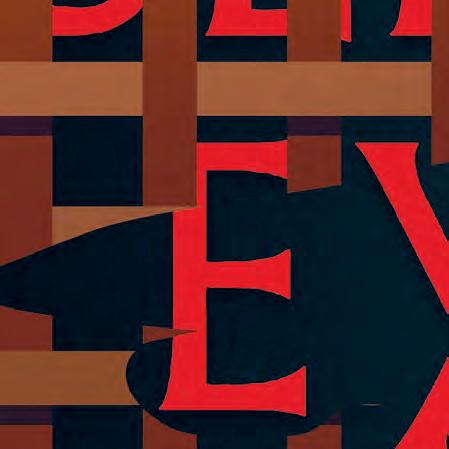




















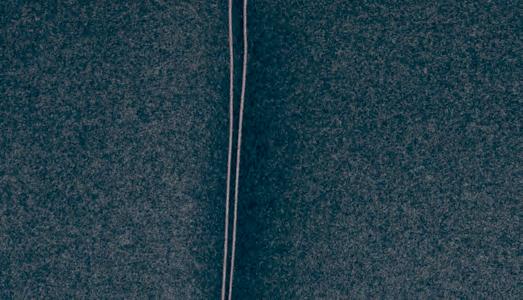















Spanning historical and 20th-century works, the Western contemporary canon and artists of the Global South, the collection in the Aspen home of ArtCrush co-chairs Jen Rubio and Stewart Butterfield is rich in juxtapositions and through lines. “I think all of the right things start to find their way to each other,” Rubio tells Xerxes Cook.
XERXES COOK
What drew you to Aspen?
JEN RUBIO
It was a pandemic move. When Stewart and I got engaged, I lived in New York where I was building my business, Away, and he lived in San Francisco, where he was building his company, Slack. We split our time between the two cities or met up when we were traveling for work. It was a game of chicken: who was going to move to New York, who was going to move to San Francisco? Then, in 2020, we happened to get locked down in San Francisco and after a few months, we decided we wanted to go somewhere where we could be outdoors. And we chose Aspen. We had a lot of friends who said good things about it and we knew some people here.
Opposite Jen Rubio at her home in Aspen, 2024
Clockwise from left: works by Lucas Arruda, Marlene Dumas, Mariano Barbasán Lagueruela, George Condo, Michelangelo del Campidoglio, Kara Walker, Jan Brueghel the Elder and Lisa Yuskavage
Photography Benjamin Rasmussen
We rented at f rst and then decided to buy a house, and we moved here full time at the end of 2020.
XC A leap of faith.
JR Yes, it’s been our home since then for almost four years now.
XC A nd how do you f nd Aspen life?
JR We love to be outdoors and Stewart loves to ski. Of course there are a lot of amazing places for that in the US, but what especially drew us to Aspen was its rich cultural scene: the Aspen Institute, Jazz Fest, the Aspen Art Museum, the Anderson Ranch Arts Center.
XC How did you get involved with the museum?
JR I was struck by the quality of the exhibitions at the museum and all the people involved on the board when we f rst arrived. And one of the people who
was most welcoming to me when I f rst moved here was Jamie Tisch, who was co-chair of ArtCrush for the last three years. She invited us to our f rst gala, and she’s the one who turned me on to the idea of becoming a co-chair myself.
Our f rst real involvement was last year when we hosted an event at our house for all the artists who had come to town for ArtWeek. The goodwill the museum has with artists, how they feel supported, really resonated with me. That f rst week in August is really there to celebrate the artists.
XC You have just come back from Venice. What were your impressions?
JR It was actually our frst Biennale. It was really exciting to go, and our focus this year was less about discovery, and more about going to see the artists
that we already support and collect. Ewa Juszkiewicz, whose work we collect in depth, has a show there at Palazzo Cavanis that was exceptional, and we f nally had the opportunity to meet her. There was a lot of work by Louis Fratino in the Giardini, who we also collect. Salman Toor, too. I would say it’s only been six or seven years since we started collecting seriously. We collect what we love things we’re drawn to, artists we connect with. We’ve started to look at things more holistically in the last few months and take stock of what we have. One thing that surprised me: if you take all the artists in our collection of several hundred works, by country of origin, it comes down to 32 countries. Half of those are countries that are usually



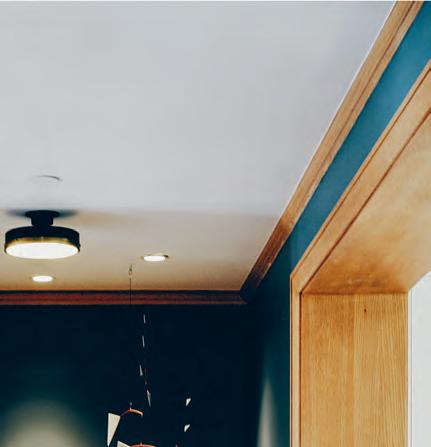


regarded as part of the Global South. We have works by artists from Jamaica, Morocco, the Philippines, Venezuela, Zimbabwe, Chile, Romania, Cuba. I think it’s interesting that while things we’ve done from a philanthropic angle have been very intentional, when it comes to diversity and access, this level of diversity in our own collection has come organically.
XC Yes, I know that you endowed a curatorial position at the Whitney Museum of American Art in New York which is focused on Latinx art.
JR That’s been super successful, and was very intentional and was about access and diversity. But for me, there’s something very satisfying about seeing that the collection we’ve built organically over the years also refects diversity, even if that wasn’t what we set out to do.
XC Are there pieces that are just Jen, and pieces that are just Stewart, shall we say?
JR Yes, but it all seems to work together. If I really don’t like something, or if Stewart really doesn’t like something, it ends up in our respective ofces. We each have our own taste, and we gravitate to di ferent things, but when it comes to a major purchase or acquisition, we both have to love it. Actually, it’s really nice that through each other, we discover things that we might not engage with otherwise.
XC In what way are the works that you both gravitate toward a refection of your individual personalities?
JR We like very di ferent types of art, but I think what’s been interesting is that the themes are pretty much the same. For example, Stewart recently bought an 18th-century portrait of a father and his son at home. And I recently bought a Carrie Mae Weems photograph — a super tender, provocative image of a husband and wife from the “Kitchen Table Series.” And somehow, they just go together. In fact, we were looking at all these di ferent themes that have emerged in our collection and there are nearly 100 works that have to do with relationships within the home and family.
XC With the span of your collection, historically, it must be fascinating to f nd the through line that connects someone like Jan Brueghel the Elder with Lucas Arruda, for example. How do you make connections between some of the surrealists you collect and artists like Vija Celmins? What unites those works?
JR We have a work from Vija Celmins’s “Blackboard” series in which she recreates blackboards she f nds — the wood, the nails that connect the frame, the chalkboard marks. It’s installed inside a lit vitrine, at the end of the hallway in our house in Aspen, and every single person who comes to our house stands in front of it for an uncomfortably long amount of time trying to guess which one is the original and which is the copy. It’s the same experience you’ll have looking at a René Magritte painting. Or works by Gertrude Abercrombie. These works all disorient you in some way.
XC Do you play around with juxtapositions when you are installing works in your home?
JR We try to live with every single piece, so we rotate works a lot. Ultimately, I think all of the right things start to f nd their way to each other. We have a Rauschenberg collage from 1964, and when you put that next to a Beatriz Milhazes work from 2022, it just works. We have a Joan Mitchell triptych next to a Richard Prince “Cowboy” painting, and it works.

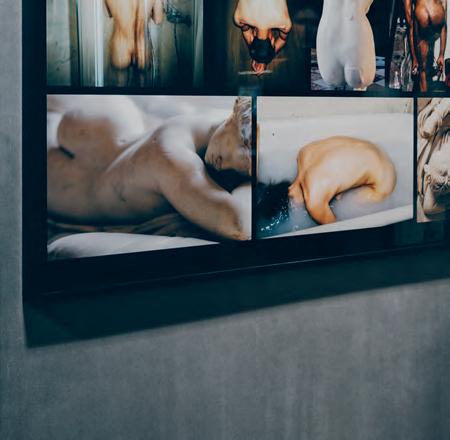













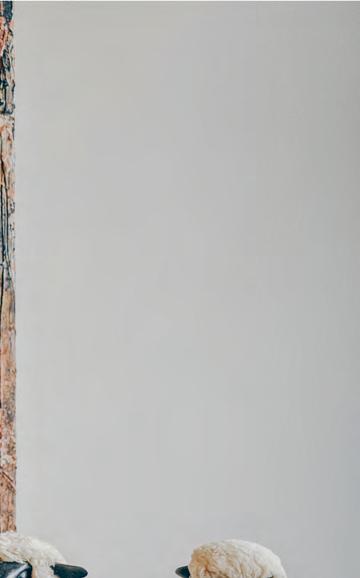
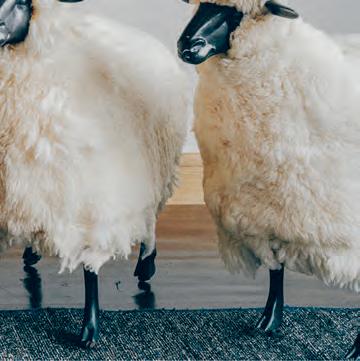
XC Talking about the “Cowboy” painting — can you tell me about your foundation in New Mexico?
JR We have a ranch in Galisteo in New Mexico, which is about 25 minutes from Santa Fe. Galisteo has a population of a few hundred people but lots of artists live and work there — Lynda Benglis, Bruce Nauman, Harmony Hammond, Judy Chicago.
The ranch has many thousands of acres and the idea is to invite artists to make works there. One of the early pieces Stewart and I bought together was an Alicja Kwade sculpture, and now she is one of the f rst artists we approached to do something on the ranch. The idea is that it’s somewhere with fewer boundaries in terms of time and space. We are interested in putting

works on there that really couldn’t exist anywhere else. The goal eventually is to make it open to the public.
XC I know you quite often support younger and emerging artists when it comes to funding major museum shows.
JR Being able to support artists, especially in the earlier stages of their career, is a really meaningful thing for me. I’m on the board of the Whitney, and have great relationships with MoMA, the Met and LACMA. If there are conversations already taking place and we can provide the f nancial support to make something happen, then that becomes really rewarding for everyone involved: the artists, institutions, galleries and other collectors. And then, on the other end of that, it’s important to us that there’s access to these shows.
For example, we funded Free Friday Nights at the Whitney, and the results have been incredible: the visitor base has become much younger and much more diverse.
XC You mentioned an early acquisition of a work by Alicja Kwade, but what was the very f rst thing that you and Stewart bought together?
JR It wasn’t exactly together, but he bought me an Ed Ruscha — a lithograph of Jet Baby, the mountain painting. This is actually quite a funny story, because before I was a collector, I didn’t really know how it worked. I didn’t know that you don’t just go to galleries and buy things. So, I’d seen Jet Baby in a photograph online and it really resonated with me — it felt relevant for Away, and I’m always traveling.
So, I called Gagosian and said, “Hi, I’d like to buy an Ed Ruscha.” I was on hold for so long! But I did end up speaking with someone and anyway, to cut a long story short, they didn’t have one available, obviously, but I mentioned this whole thing to Stewart. He found one at auction six months later, and bought it for me — that was one of our f rst pieces.

















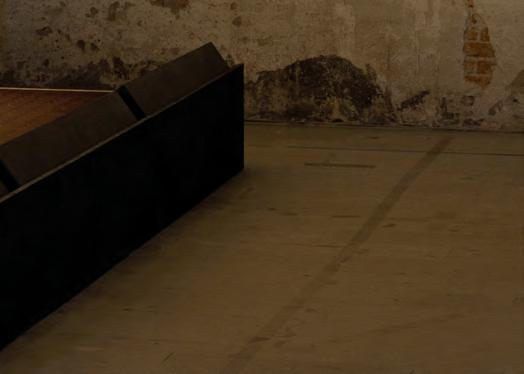





For Aspen ArtWeek, acclaimed artist Ryan Trecartin is assembling a group of performers, artists and musicians — including influential DJ Bobby Beethoven and ArtCrush Honoree Jason Moran — for a collaborative live performance. This commission continues an enthusiasm for cooperation and an engagement in the sonic that have marked Trecartin’s practice since the start, as Harry Tafoya explores.








“I love writing music but always write it with the intention of it being used as supplies for sound design,” Ryan Trecartin con fded to Artnews in 2016. “I’ve always wanted to translate it to live instruments.” For only the second time ever, an Aspen ArtWeek 2024 performance will see Trecartin do just that, in collaboration with musician Michael Beharie, Trecartin’s long-time creative partner Lizzie Fitch, the DJ Ashland Mines (aka Bobby Beethoven, fka Total Freedom), ArtCrush Honoree Jason Moran, and artist and composer Aaron David Ross (aka ADR).
Sound might not be the f rst discipline associated with Trecartin, but in the sprawling video installations for which he is renowned, there’s rarely ever a moment of silence. When Trecartin’s characters aren’t singing, screeching or shouting into the void, they’re usually being accompanied by ambient patter or drowned out by successive waves of sonic blasts. His sound design can be as tactile as f ngernails on a chalkboard or as blaring and relentless as a DJ set. In the odd moments when the dialogue does cut of, it’s usually a brief faint before the volume resumes at an even more frenzied level. This non-stop cacophony serves to characterize Trecartin’s distorted and outsized creatures — a cast of hyper-articulate, motor-mouthed mutants who bear an uncanny resemblance to contemporary YouTubers and TikTokers. It also works as a kind of echolocation: a means of “sounding out” where they stand in relation to one another and the wider world. “The characters are constantly negotiating ideas that I conceive of as architecture,” Trecartin explained in a 2013 interview with frieze, “[they] are always declaring things to explore and def ne where they are situated, to f nd out if they’re participating in the same architecture; to f nd out if they’re collaborating or not.”
You could trace this concern with collaboration back to Experimental People (aka XPPL), the band which


Trecartin was part of in college and describes as “deeply collaborative and ever evolving.” While he played keyboard and bass guitar, XPPL bandmate Lizzie Fitch began to mess around with the software FruityLoops to create rudimentary but intricate instrumental beats. However, rather than building out a functioning rhythmic foor, Fitch’s beat-making was brittle, elaborate and interwoven — in our recent conversation, she spoke of them as being more like creating a knotty textile rather than generating something that you could rap over. Fitch would go on to become Trecartin’s most consistent collaborator, and together the duo have built a sprawling multi-media practice with a revolving cast of regular associates, among them Ashland Mines. Mines has worked on-and-of with the duo since at least 2007, when he f rst appeared in Trecartin’s 2007 f lm I-Be Area . Their collaborations have taken all manner of forms: from bizarro fashion editorials for DIS to opening for Cardi B at MoMA PS1, New York, in 2017. All three are casually selfefacing and eager to credit the other’s contributions, and their decentered approach to authorship and fascination with how to wrong-foot their audience has been a reliable engine for new work. When, in a recent conversation, I characterized Mines as a “musician,” he balked slightly. Mines doesn’t think of himself as ftting neatly into that category, nor that of “artist.” (If pushed, I imagine Fitch and Trecartin would feel the same.) But music has been a constant throughout Fitch and Trecartin’s collaborations across the decades. “I try to make my movies feel like music,” Trecartin con fded to the journalist Annie Armstrong in an interview this January. “You know how the f rst time you hear a song, you hear the whole form, and it’s more of a ride and an experience than when you obsessively play it on repeat and you start to hear all the components that make the song. [My movies] are
designed to be more of a ride that you have to let wash over you and dive into.” This hyper-textural approach to sound is in keeping with the rest of the duo’s output, as is their tendency to remix and recontextualize whole raw elements into their work. Trecartin also mentioned in our conversation his desire to create a “sculptural” aspect to music — something more deeply felt than a simple accompaniment. This syncs extremely well with Mines, in whose mixes, produced as Bobby Beethoven (fka Total Freedom), pop hooks gasping for air accelerate into a furry of jagged sound, hard-hitting drum breaks and ear-shreddingly harsh noise: a fascinating counterpart to the mangled language of Trecartin’s scripts, themselves combinations of original writing and found sound.
In one sense, the roots of this year’s Aspen ArtWeek commission can be traced back to 2016, when Jason Moran was programming a series of performances at the Park Avenue Armory in New York. Trecartin relates how Moran’s “way of experiencing the movies, and the way he noticed the sound design” led him to ask Moran to consider translating his work on video scores into a composition that could be played live. The resulting piece was realized in collaboration by Trecartin and ADR, Fitch, Mines, and vocalists Ian Isiah and Akeem Smith. Eight years on, the ArtWeek performance, Trecartin says, will be “taking that f rst experience, the f rst ‘try,’ to a new level.” Commissioned by curator Eliza Ryan, the project’s title — Audience Plant 2024 — sums up the warped but engaged vantage point it aims to establish. Fitch, Trecartin and Mines will once again be joined by Moran, as well as 15 other musicians. For this performance, the group has been working with an ensemble to adapt music Trecartin has composed on his computer for live performance (besides two songs from the 2016 composition, it will all be music written
after 2022). This element of translation, from sound waves that can be in f nitely manipulated to the reality of musicians with only so many hands, has a certain poignancy that speaks to the present but, in a way, also harkens back to Trecartin and Fitch’s earlier years with XPPL. “Live music has always been quietly happening,” Trecartin observes. To my mind, Trecartin, Fitch, Mines and their milieu are inextricably linked to the most exciting currents that ran through culture in the early 2010s — a period when, with fellow experimentalists like Jacolby Satterwhite, Telfar Clemens and DIS , they attempted to get to grips with a world that was both f attened and heightened by the internet, by mapping it out for themselves. The three of them set out into uncharted digital territory but weren’t afraid to work through the strangeness at its heart. Social media prompts its users to endlessly express themselves, while simultaneously collapsing everything into an undi ferentiated heap of content. But, rather than being overwhelmed by this glut of information or becoming a cowed and passive subject to the algorithm, Trecartin and his collaborators have long suggested that one could not only adapt to this landscape but be active and thrive in it together. The vision they created was manicured and messy, fun and threatening, performative and confessional. It might appear to be a cliché to call their work “prescient,” but the world we inhabit feels strikingly similar to theirs.
In some ways, the piece for Aspen ArtWeek represents both a departure and a return — a reminder of the trio’s gifts for manipulating sound and of breaking through with all new IRL capabilities.

Legendary editor, journalist and author Tina Brown is the first external curator of the Aspen Ideas Festival: bringing baseball stars, CEOs, Shakespeare scholars and a diverse spectrum of thinking to Aspen this June
EVAN MOFFITT
You’ve had a long and illustrious career as an editor, from Tatler, Vanity Fair and The New Yorker to founding The Daily Beast. You chronicle some of those experiences in The Vanity Fair Diaries [2017], which is full of dishy insights on the politics and culture of the 1980s, but also shows how you were able to put that magazine on the map. So, can you explain what makes for great editorial? What do you look for?
TINA BROWN
I’m always looking for a strong point of view. An against-the-grain point of view. Vivid writing and a f air for combining that with visuals. The photograph, with the headline, with the text it’s an art form, to make those things kinetic. That’s what Vanity Fair did at its best bring together pictures, words, captions, headlines, the article, the cover. It was a real package. Sometimes people erroneously think that a great magazine is a bunch of articles with a staple through it, but actually, it’s so much more than that.
EM Do you approach the challenge of putting together a dynamic talks program in a similar way to curating a magazine, with a broad range of voices?
TB Yes. My approach to the Aspen Ideas Festival has been very much like the approach I bring to magazines. I have had a parallel career in live events for a long time. For ten years, I ran Tina
Brown Live Media and Women in the World, with summits globally.
I was actually the f rst person to use the term “live journalism” because I saw that broadcast journalism, in particular, was reluctant to give time and space to fascinating voices that weren’t those of celebrities. That’s why I created Women in the World t o bring to the stage global women who no one had ever necessarily heard of, but who had powerful stories to tell. You need your Angelina Jolie or your Oprah so that people show up, but really, what they go home talking about is very often someone they’d not heard of before, who shared their spotlight. So, with Aspen Ideas, I approached it like an issue of Vanity Fair or The New Yorker. I’ve tried to bring the highlow mix of pop culture, as well as idea-driven conversations and writers.
It’s actually the f rst time I’ve done a festival, which is a whole other animal. There’s a certain amount of exciting anarchy to a festival because it’s all going on at the same time. You really have to accept that people are going to be choosing one event over another. Every program needs to ofer a way to get people into the room. And, in Aspen, you’re not only competing with the other programs but with the gorgeous scenery; a lot of people are attending the festival so they can have a smattering of culture and then go of
for a hike. You have to just live with that, but as a control freak, it worries me. I’m always asking my team, “How can I make this program better than a hike?”
EM H aving just returned from power walking the Venice Biennale, I can absolutely relate.
TB I like that analogy. I’m hoping that Aspen Ideas will have that Biennalelike feeling where you suddenly discover something and you don’t really know who or what it is.
The festival is a real banquet this year. We will have comedian and writer Bill Maher, the artist Hank Willis Thomas, who made The Embrace [2023], the sculpture honoring the relationship of Martin Luther King Jr. and Coretta Scott King, and the writer Chimamanda Ngozi Adichie. John Legend is conf rmed, but not yet announced. Then there is the actor Renée Fleming; Satya Nadella, the CEO of Microsoft; Jane Fonda; the Brazilian musician Alok; the journalist Fareed Zakaria; the baseball great A-Rod; and Kris Bowers, the composer and documentary maker who just won an Oscar for The Last Repair Shop [2023]. So, you can see, it’s a great mix. I don’t think there are many events where you can f nd both A-Rod and Fareed. We have a wonderful panel called “Shakespeare and Politics,” moderated by New York Times column ist Maureen Dowd, with Shakespeare
scholar Stephen Greenblatt and hist orian Sir Simon Schama.
EM You’ve assembled a cast of speakers from across the political spectrum. Jane Fonda and Patrick Cox, the Republican governor of Utah, for example, might not agree on all that much. What do you hope to achieve with such an ideologically diverse assembly?
TB I w ant to make a point. It’s deeply boring when it’s all the same old liberal or Republican consensus. It’s very hard today to get a mix like this, but I want to ensure that we really do cross the spectrum. We have the conservative historian Niall Ferguson doing a panel on the China-Taiwan issues with Matt Pottinger, who was part of the Trump administration. And yet, we also have former Secretary of State John Kerry on the climate crisis. I don’t want this festival to feel hermetic, like everybody’s got the same point of view. You want people to be challenged intellectually and enjoy it.
EM W hat are your impressions of Aspen itself? Is there anything about it that is conducive to this kind of assembly?
TB I k now a lot of the people at the Aspen Institute. I’m a very good friend of former CEO Walter Isaacson and I’ve been to the festival as an author. The combination of the ravishing landscape, the backdrop of the Rockies and a very,


very deep history of intellectual debate, with people of stature — it has acquired a kind of wonderful halo.
Aspen stands for intelligence, humanity and conversation. This is the 20th festival — that’s a very deep pedigree. Now, they want to change direction a bit, but still work with those great bones. There are many people who’ve come to Aspen for years and they’ll all still be there, but also some fresh faces, like Sam Altman, CEO of OpenAI. Talking with the tech people, many of them are not as aware of what Aspen stands for and it’s great to remind them that Steve Jobs famously attended the Aspen Institute when it was a design festival, a long time back. These people don’t actually need the stage of Aspen, and yet they want to be there.
EM In 2023, in partnership with Reuters and Durham University, you hosted Truth Tellers in London, the inaugural Sir Harry Evans Global Summit in Investigative Journalism in honor of your late husband. There are a lot of remarkable journalists in your lineup for Aspen and I imagine some overlap with Truth Tellers. What were your intentions behind starting that initiative? And what do you hope it can achieve in what feels like a particularly fraught moment?
TB As an editor and writer, I’m a passionate believer in serious




journalism. I feel we’re at a desperate moment, a crossroads where credible news outlets are collapsing every day.
It’s really a frightening time. And we’re living in a very dangerous world. So many journalists have died in the last 12 months in wars or been thrown into prison, like Evan Gershkovich in Russia. It is an increasingly unsafe environment for the truth tellers, the brave witnesses. I think it’s very important to pause and valorize journalists, single out people who are doing great work, hear them talk and give them scope to meet other journalists, because many feel very isolated.
In Aspen, we’re also going to have a discussion about the threats to journalism. No one can quite f gure out how to sustain it. There is corporate ravaging by greedy hedge funds who buy news platforms and then strip everything out of them. Then there are really timid corporates who also take over and are afraid of being sued, so they never want to do anything challenging or good. Then you’ve also got digital disruption, where everything is getting stolen and ripped of So, what are the new business models? Nonproft? Subscription? There are many ways to try to make money out of it somehow, but it’s def nitely one of our great challenges. How do we sustain the truth tellers, the witnesses, the guardians of our society?
EM There is also the need to both receive funding from certain establishments, corporations or institutions, but also retain su fcient editorial independence to criticize those same entities.
TB Exactly. They get by through winning over someone with a great deal of money, and suddenly they can’t make any criticisms. Who owns the press is one of the other great questions.
Reuters is one of the great independent, investigative journalism organizations. It’s an extraordinary newsroom — not f ashy, but they are winning prizes constantly. Truth Tellers is not an event that mourns the end of journalism by any means. We’re showcasing new forms that are brilliant, like Bellingcat, Forbidden Stories, and Paul Radu and the Organized Crime and Corruption Reporting Project, for instance. I think it’s incredibly important that we learn about new forms and see how we can grow journalism with new tools, platforms and founders.
EM Do you have any advice for young journalists starting out in the feld?
TB The second strand I launched with my foundation is an annual early-career Global Fellowship in Investigative Journalism. The fellow spends six to eight months working in the Reuters newsroom, mentored by a terri fc journalist.
But otherwise, my advice is to hook yourself up to whatever nonproft you can f nd that’s got some funding and just start investigating. Find out something the world needs to know, and get it out somehow, because that’s the way to make a career.
I think we’re in a transitional moment, because people are beginning to get very agitated about a world without credible journalism. The world of deep fakes and the whole information chaos is so intense that it’s actually beginning to scare people. There was a massive grant of $500 million, from the MacArthur Foundation, toward supporting journalism. The people with funds are beginning to understand.
EM A note of hope.
TB Yes, a note of hope. Aspen Ideas: I’ve called it, Bright Minds for Dark Times. These are dark times, but there are bright minds. Aspen is the bulwark against this chaos I’m talking about. Aspen is a place of creativity, intelligence, civility and civilization, which is what we all lack. It is a week where you can spend time refreshing your spirit and soul.












































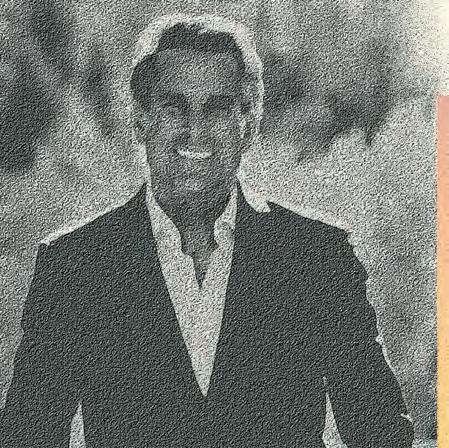
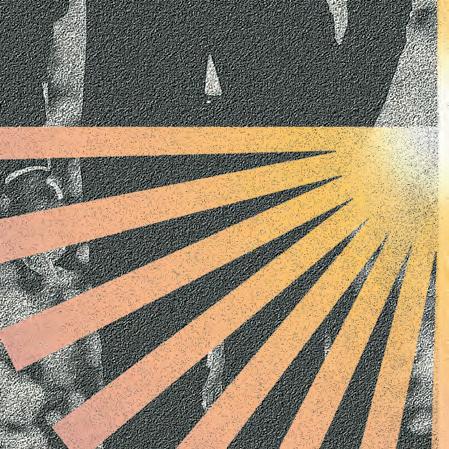










































































At any given moment, the Aspen Art Museum never looks quite the same. Designed by the Japanese architect Shigeru Ban, the building is essentially a glass cube enveloped in a latticed screen made from paper and wood. Sunlight streams through the woven grid, casting dramatic shadows throughout the space. The efect is as ephemeral as it is ethereal, changing with the seasons and the time of day.
The urban fabric of Aspen consists of two-story brick buildings built in the late 19th century, when the city was a mining hub. As it became a destination for ski enthusiasts in the 1940s and steadily evolved into a glamorous holiday destination, the character of downtown didn’t change. Famous
architects like Renzo Piano, John Lautner and Antoine Predock had commissions within the city limits, but their buildings were all private homes. The unveiling of Ban’s building for the museum in 2014 was something of a turning point. “The architecture speaks,” says Spencer Bailey, a New York-based architecture critic who grew up in nearby Breckenridge. “It’s a way of saying that Aspen is a serious art town.”
While the Aspen Art Museum is distinctive, and initially received mixed reviews, it has proven to be a good neighbor, in dialogue with its surroundings. The facade’s brown hue, boxy silhouette and grid pattern nod to the brickwork found throughout the town.
Its visual porosity invites curiosity; it’s not an opaque box that announces exclusivity. Upon entering, visitors can choose to wander through galleries situated in the building’s core or ascend a 10-foot-wide staircase on the perimeter that leads directly to a rooftop mountains. Throughout the building, Ban has relied on wood, anticipating today’s craze for timber. The material has a lower carbon footprint than steel and concrete and also radiates a sense of warmth.
The year the Aspen Art Museum opened to the public, Ban was awarded the highly prestigious Pritzker Architecture Prize. The award jury celebrated the architect’s sense of social responsibility, commitment

to sustainability and respect for the people who use his buildings. These values are as evident in the museum as in Ban’s other projects, which include refugee shelters and disaster-relief projects. In the hands of another architect, the museum might have become an ostentatious stylistic statement that never settled in. However, Ban’s building has aged gracefully, earning the approval of its community in the process. “It’s a very sensitive building,” Bailey says. “It quickly became a beloved part of town and that’s because it is good architecture.”


















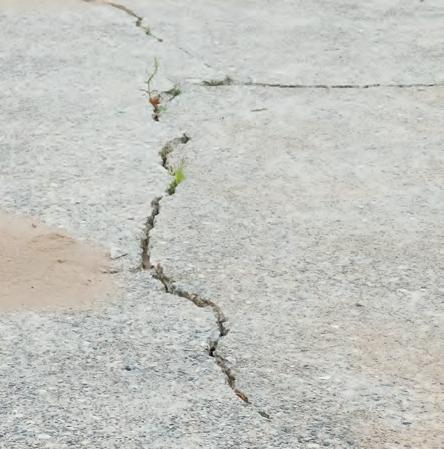







In the catalogue essay for Jacqueline Humphries’s 2022 exhibition at Greene Naftali in New York, John Kelsey observed that with Humphries’s work, “epic energy is summoned within a sort of aesthetic twilight zone where painting radically doubts its own truth as a medium.” This is a pithy synopsis of decades of output by a painter who ceaselessly works through the medium’s most beloved clichés, upending its ex pres sionistic virtues, immodestly injecting postmodern strategies into abstraction’s modernist grip and almost always on an ironically heroic scale.
Humphries’s long-standing position of doubt is understandable. She was a student in the venerated Whitney Independent Study Program (ISP) in 1986, which has long been characterized by its adverse posture toward painting as well as its gravitas. A painting practice imprinted at the ISP in the 1980s needed a quiver of critical strategy if it was to fourish as a cultural enterprise. And, to a great degree, Humphries was pragmatic when she married abstraction to the postmodern discourse of suspicion. The indeterminate, anti-narrative, ironic, writerly and anti-interpretational: all are invoked by Humphries to ensure painting’s semantic instability. The result is an uncompromising and untiring studio engagement directed at painting’s ontological edges.
Her dot paintings from the 1980s were an early investigation into indexical mark-making and an opportunity for Humphries to exploit the painterly dab — not as an expressionistic gesture but as a semi-mechanical action that could yield a mark analogous to typewriter keys. Emptying the process of intention and caprice, she distributed crude dots over a wet ground, producing irregular efects due to gravity and the cadence of application. The repetitive scheme of these early works, rife with inconsistencies and organizational f aws, foregrounded Humphries’s ongoing enthusiasm for mistakes and glitches. Out (1989) furthered the malfunctional qualities manifested in the dot paintings. By carving shallow contours into the ground, the support redirected the artist’s subjective touch; applied blotches of thinned, black paint took their shapes over the white surface from gravitational fow and pooling. Instead of relying on spontaneous gesture, the topographical ridges and grooves functioned as a petri dish for developing non-expressionistic systems of abstract mark-making.
The paintings that followed Out also employed gravity and repetition to produce multi-directional compositions, each one dynamic, inscrutable and overperforming. #5 A (1995) marked a shift into mechanical reproduction: the inkjet print on linen is a mirrored copy of the
painting in oil, #5, from the same year. The hackneyed vocabulary of abstract expressionism led Humphries to the crafty, low-tech stencil, as she copied, resized and redistributed paint pours and splatters. In Sunset (Yellow) (1996), she made red pours over a yellow ground, then hand cut stencils of those pours, using them to add spray-painted black versions. This rudimentary tool for semi-accurate, labor-saving graphic reproduction became Humphries’s primary device for mark-making going forward.
The stencil, which has become more sophisticated in its production, provides a critical process that denudes originality and meaningful virtuosity by encoding replication. For example, in the allover white-noise pattern of the diptych Oo (2022), the scale and texture achieved by stenciling creates a result similar to industrial printing. Humphries’s emoticon paintings and ASCII-code compositions also rely on stencils to achieve the dense utterances, patterns and sociality of super fuous, untrustworthy digitalcommunication systems. A vast feld of upside-down, smiling emoticons stenciled over a washy, blue ground f lls :) (2015). In :cat: (2016), silhouetted emojis are stenciled with impasto potency into a gestural patchwork of overworked grids and green smears. The result is an unevenly pixelated image that could have been culled from a generic and unattributable abstractexpressionist painting.
Humphries’s black-light paintings integrate the conditions of viewing into her critical attitude in ways that surpass heroic scale and contrived hanging strategies. Suturing the theatrical efects of sacred spaces with rave culture and populistic carnival experiences, the gimmick value of the spectacular and glowing abstractions is intended to work overly hard to get our attention. Untitled (2016) radiates red as a small, black, opaque dab hovers to the left of a ghostly, blue fash. The framing device delineating the inner edge of the painting is an example of how Humphries integrates codes of screen technology into the Greenbergian picture plane. The skillful mediation of painting’s authoritative signi fers in other series is crushed by the immediacy of the aesthetic thrill in this series.
Humphries’s silver paintings are grave in contrast. Their f ickering, metallic surfaces host an excess of excavation. They are slower because they seize on the removal of material while still evoking instability brought on by changing light conditions. Untitled (2014) is a frenzy of trace vocabularies that emerge from the action of scraping the surface back to a uni fed plane with cake knives.
Photography Adrianna Glaviano
Explore the full program here: aspenartmuseum.org/ artweek2024

Recent paintings, with overlays of painted blood splatters, equate the super abundance of viscous bodily fuid prevalent in schlock horror f lms with the clichés of authentic painterly expression. Red and green spurts shower JH6122 (2023) in a painting that is humorously wretched and uncontrolled. While Humphries’s relationship to painting’s perennial death is that of disinterest, its demise and resurrection ofer her fake gestural vocabularies and uni fed compositional forms. The horror paintings also underscore a waning assumption that there is urgency in the power to negate and subvert painting’s authority.
The artist’s analytical endeavors have never been of more consequence than they are now, in light of painting’s preoccupation with messaging stories — autobiographical and social — all bereft of communication’s tactical competencies. There is no messaging
in Humphries’s paintings, only varied deployments of codes of communication and their formal and critical potential. Her steadfast engagement in the rhetoric of skepticism ultimately expands the strictures imposed on painting, a position now commonly rejected by post-criticism, while her practice, foregrounded in a critical attitude, has always been insubordinate to painting’s authority. The lesson Humphries’s work teaches us is that doubt and suspicion seed invention and this can radically change painting’s forms.





Music and visual art have always been entangled, especially in the history of modernism, where dance, painting and radical new sonic palettes were counterposed from the start. Think of the dadaists at the Cabaret Voltaire during World War I or the coterie of multimedia performers that emerged from Black Mountain College or the Fluxus movement at mid-20th century. But, more often than not, it was the painters who seemed to take their lead from the musicians, as they waxed about the ways in which sound could bypass the symbolic world, spoke directly to the soul and resonated with all people. In a recent conversation, Jason Moran echoed that same sentiment, observing that acoustic vibrations can change the motion of water, a fect a listener’s chemistry: “Duke Ellington’s somber places open people up; Coltrane begins A Love Supreme in E minor, with a burst of energy; Stravinsky’s The Rite of Spring agitated to the point of causing a riot … and playing around the world you get a sense of what people are feeling.” And play around the world Moran has, since he broke into the public consciousness as a young pianist, cutting a celebrated 1997 record for Blue Note label with saxophonist Greg Osby. A steady stream of solo projects — many regarded as instant classics — have followed. Elected a MacArthur Fellow in 2010, a relentless composer and committed educator, he is also the artistic director for jazz at the Kennedy Center in Washington, D.C. But, for all that, Moran is perhaps best known as a generous collaborator, who has shared the stage with many, and not only other jazz players. For instance, his groove
on the electric piano anchored LuandaKinshasa , the speculative 1970s-era “documentary” made by Stan Douglas in 2013. Over the past decade, he has worked with a roster of leading visual artists: Adam Pendleton, Julie Mehretu, Joan Jonas, and Ryan Trecartin and Lizzie Fitch. With the latter two, known for their innovations in sound and video, Moran f rst connected for a multiday celebration he curated in 2016 for the reopened Veterans Room at Park Avenue Armory, and they will reprise their collaboration this summer at the Aspen Art Museum.
Visiting the retrospective of conceptual artist Adrian Piper at MACBA in Barcelona in 2004 was a turning point for Moran. Seeing her multimedia imagery — which frequently takes up questions of race and gender in America — in an unexpected context made him think about space di ferently.
“Piper challenged me and I was never the same afterwards … she hit a frequency in that exhibition. Afterwards, I felt open.” He cites his ongoing creative dialogue with Jonas (a foundational f gure in contemporary performance art, known for sustained meditations on women’s bodies and mythic forms) as a potent force that has shifted his approach to composition. But perhaps Moran’s commitment to blurring the lines between modes of creativity was inevitable. He points out that many jazz players — George Lewis, Anthony Braxton, Miles Davis — had a visual practice; they just weren’t always public about it. Furthermore, his parents were collectors in their own right and also kept “pottery under the piano, so the feeling around the instrument wasn’t
sterile.” These experiences allowed Moran to connect to a deeper expressive tradition, exempli fed by the creative cross-pollinations that inspired Biggers in the wake of the Harlem Renaissance, and which resonated anew with AfriCOBRA and the AACM in Chicago and beyond during the late 1960s. Such groups blurred the lines not only between the senses, but between the aesthetic and the social.
Reactivating histories in new contexts is at the core of Moran’s practice. Sometimes this is as simple as playing songs from another era to the next generation of listeners. Elsewhere, it means rescuing archives from obscurity, even if they are transformed in the process. For instance, for STAGED (2015–18) Moran created three-storied New York clubs in miniature. But not simply physical memorials to bygone places — they are each activated by live music or ghostly player piano rolls, each breaking the quiet of the gallery, su f using it with new frequencies. The visual, in turn, allows Moran (and us) to perceive those same vibrations from a di ferent vantage point. He notes that, as musicians, “we don’t ever get to see what a frequency is, so that’s something absent … but the relationship with the visual centers me. The reason I rely on that space is because being in a gallery sometimes helps answer questions I have about sound.”
Unsurprisingly, some of Moran’s most arresting pieces have emerged in his pursuit of sound made tangible, as in a series made by placing Japanese Gampi paper on his piano keys. Here, black and blue pigment are impacted onto the surface by the motion

of Moran’s attack, or the unpredictable draw of gravitational forces. The results are beautiful streaks of abstraction. They call back to earlier passages in expressive American “action painting,” which Harold Rosenberg postulated, in a 1952 essay of the same name, as being like a recording of a blistering bebop session — the residue of an artist’s encounter with a moment in time and space. The series’ chromatic quality marks a visual and sonic inter play, the movement along diatonic scales registered in vibrant hues, the “black and blue” named in 1929 by Fats Waller and made famous by Louis Armstrong, Al Jarreau and many others.
The works on paper appear in museums and blue-chip galleries, providing evidence of Moran’s serious artistic chops as a solo artist. But, ever seeking the unexpected potential of dialogue, he seems most at ease in his role as “side man” or session player. Moran f rst visited Aspen decades ago to learn from Ellis Marsalis, while studying with what was then the Thelonious Monk Institute of Jazz (now the Herbie Hancock Institute of Jazz). When he reconnects with Trecartin and Fitch there this year, it will be something of a homecoming: summer is a time when musicians fock to Aspen to, in his words, “share thoughts on improvisation in the altitude.”














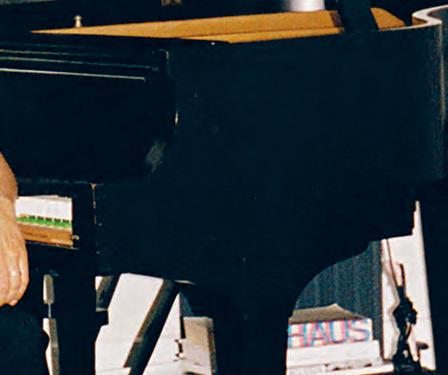






















































Works by these artists and more will be auctioned in support of the Aspen Art Museum during ArtCrush 2024. Each work has been generously donated by artists and their galleries. To celebrate our milestone anniversaries, the museum has ofered to share proceeds with donating artists, a practice which will remain a cornerstone of ArtCrush for years to come.
Discover some of the participating artists here and view the complete selection of works in person at the AAM from July 17 to August 3 or online at christies.com/ aspenartmuseum. Compiled with the support of the AAM’s Collector Committee, co-chaired by Abigail Ross Goodman and Molly Epstein, the exhibition brings together over 50 artists across a wide range of disciplines.

Jonathan Lyndon Chase Work generously donated by the artist and Company Gallery
For their 2023 exhibition at Artists Space in New York, Jonathan Lyndon Chase took on the barbershop reclaiming the setting and the service it provides as a Black, queer space. As often in their work, Chase created an entire environment, populated with bold, fgurative paintings of people being coi fed (some canvases embedded with actual hair products) and soft sculptures, reminiscent of those of Claes Oldenburg, including a giant brush, clippers and a tub of pomade. Awarded a fellowship in 2022 by the Joan Mitchell Foundation, Chase explains in an interview on the foundation’s website: “My work is primarily about everyday experiences: what it’s like being a city person, a Black person, a queer person, and also being nonbinary. The body and space relationships between the private and the public are really important to me. […] But I’m really interested in beauty, the body at rest, showing love and tenderness in my work, and also eroticism.”
A Baptist upbringing has informed Chase’s work, which has since absorbed in fuences from music, f lm and visual art, including the work of Romare Bearden, Kerry James Marshall and Henry Taylor.
Inspiration comes, too, from the city, poetry, dreams and photography, and, in 2020, they published their f rst book, wild wild Wild West / Haunting of the Seahorse, which experiments with the genres of science fction and horror.
Chase lives and works in their hometown of Philadelphia. Their work is held in numerous important collections, including the Institute of Contemporary Arts, Miami; Los Angeles County Museum of Art; Philadelphia Museum of Art; Walker Art Center, Minneapolis; and Whitney Museum of American Art, New York.

Derek Fordjour
Work generously donated by the artist
Derek Fordjour is best known for his large-scale paintings which combine acrylic with charcoal, pastel, foil and other materials on newspaper the salmon pink pages of the Financial Times, to be precise all mounted on canvas. Figures often engaged in sports or some kind of performance repeat to create a pulsating rhythm. In Aquatic Composition (2019), held in the collection of the Los Angeles County Museum of Art, swimmers plough up and down the pool, their uniform white swim caps bobbing above the surface, rotating arms throwing up spray. Painted in Fordjour’s signature vibrant tones, the cheerful bunting and lane-dividers here bring the intense details and patterning typical of his work. In Chorus of Maternal Grief (2020), held in the Guggenheim Museum, New York, the robes of female singers merge into a sea of sumptuous purple, echoing the harmonies of the music we cannot hear. Full of energy, the paintings are also imbued with a sense of nostalgia, their dapper f gures exuding an oldworld glamor.
There is a great deal of joy in Fordjour’s work, but also darkness. Pall Bearers (2020), in the collection of the Hammer Museum, Los Angeles, shows six f gures in top hats and tails, heads bowed, carrying a gold casket a work inspired by images of George Floyd’s funeral. In a conversation with Trevor Noah for Interview magazine in 2023, the comedian and presenter shrewdly observed his friend’s work to be “both a celebration of the Black experience and its excellence and power, and at the same time, it’s an examination of everything that Black people have had to experience.”
Fordjour was born in Memphis, TN, and lives and works in New York. He was the Alex Katz Chair at Cooper Union and served as a Core Critic at the Yale School of Art.
Emma McIntyre
Work generously donated by the artist, David Zwirner and Château Shatto



There is a dynamism to Emma McIntyre’s paintings. It is as if the process of becoming is not yet resolved their energy has been captured, their organic forms arrested in f ight. Either large or small nothing in between McIntyre favors a strong palette, often using a restricted selection of colors within each work, with one tone in particular dominating the whole. She combines oil, acrylic, oil stick and other materials, adding in a chemical solution which reacts with iron-based pigment; its rusting e fect is almost instantaneous, but the colors mutate further over time.
McIntyre begins by pouring her paint onto a f at support, allowing chance to play a protagonist’s role. Once she has reoriented the work, she adds further marks, using brushes, rags and her f ngers. In recent paintings, recognizable details have emerged amid the abstractions plants and signs of animal life. In an article from 2022 for Cultured , Dean Kissick quotes McIntyre as explaining, “Sometimes it feels like I can almost see the f nished work, and the painting process is about f nding it.”
McIntyre acknowledges the in fuence of a number of greats, including Sigmar Polke, Helen Frankenthaler, Joan Mitchell and Cy Twombly. Her enigmatic titles, such as Laws of night and honey, The gospel of translucence , Queen of the air, Doth mutation love (all 2023), add an extra layer of poetry to these beautiful and intriguing works. Born in Auckland, New Zealand, McIntyre completed her undergraduate studies and f rst Master’s degree there and, in 2021, she completed a second MFA at the ArtCenter College of Design in Pasadena. She continues to live and work in Los Angeles.
Shota Nakamura
Work generously donated by the artist and Clearing
Writing in 2019 for Tate Etc. about the French painter Pierre Bonnard (1867–1947), the critic Barry Schwabsky observes, “Bonnard’s was an art of fux. He eschewed the clear, well-def ned forms of classical art to orchestrate a symphony of coloured blurs and smudges that only gradually add up to scenes of everyday life. Each patch of colour is, in itself, a distinct vibration, a di ferent frequency, and, at the same time, each one communicates something of its own inner motion to all the others, little by little, as the eye moves back and forth among them.”
The interpretation feels pertinent to the work of Shota Nakamura; the resonances between his work and that of Bonnard and his fellow Nabis painters are strong. The stylization and use of color at once bold and muted; the simplifed forms and fatness that also recall the work of another earlier French painter, Pierre Puvis de Chavannes (1824–1898). But in the subject matter, too: landscapes and gardens, domestic interiors and the two combined.
Nakamura grew up in the mountainous prefecture of Yamanishi, Japan, near Mount Fuji, a long way from rural France, but his dreamlike landscapes could be anywhere. Painting with oil on linen, there is a lightness to his touch, an ethereal quality that recalls the oneiric aspect of some of Peter Doig’s work. The fgures themselves are like apparitions. Often sleeping, sometimes reading, they are only partially present their minds elsewhere, their bodies assuming a ghostly presence.
Nakamura moved from Yamanashi to Tokyo to study art, before moving on to Berlin, where he continues to live and work.
Work generously donated by the artist and Pace Gallery
Angels, dragons and other fantastic beasts dominate the paintings of Robert Nava. The roughly rendered creatures are inspired by a diverse range of sources, from prehistoric cave art to cartoons, from philosophy and religion to video games. Combining acrylic with grease pencil and spray paint, Nava’s naive, playful images exude a raw energy. What the absurdity and cartoonlike violence lack in horror, they make up for with comedy. There is a f rm nod toward Jean-Michel Basquiat, and maybe even Jean Dubu fet, and without doubt the work evokes the “‘Bad’ Painting” named by critic and


curator Marcia Tucker back in the late 1970s. In an interview in 2019, cited by Owen Du f y writing in 2022 for Art Review, the artist Katherine Bradford makes the bold suggestion that Nava “paints f gures almost the way Cy Twombly would have, had he painted f gures.”
Discussing Nava’s determination to “deskill,” Du f y himself writes, “He renders three-dimensional objects with a distorted sense of fatness and messy linework.” But, of course, as with all those that went before him, the naivety is knowing, for as Nava himself explained in an interview with émergent magazine, “there’s just a lot more room in what people would call the ‘incorrect’ ways of painting.”
Born in East Chicago, Nava lives in Brooklyn. In 2011, he graduated from Yale School of Art, New Haven, with an MFA in painting. His work is held in the collections of a signi fcant number of museums around the world, including the Art Institute of Chicago; Hirshhorn Museum and Sculpture Garden, Washington, D.C.; Los Angeles County Museum of Art; and Museum of Fine Arts, Houston.
Naudline Pierre
Work generously donated by the artist and James Cohan Gallery
Naudline Pierre’s cast of characters inhabit a parallel world. A peaceful one painted in rich earth tones. Its inhabitants foat in a void or huddle together, their bodies entwined in acts of tenderness. Flames whip around them, engul f ng them, but seemingly without danger. Many are winged, ofering the potential for escape. The images are sensual, but also possessed of a certain innocence. And at their center is one particular female f gure, who on occasion the artist has described as her alter ego.
Having found her way into painting through religious art, Pierre has gone on to create her own mythology. In a short f lm made in 2021 she declared,


“I think imagination is so important to survival.” The swirling symbolism of her canvases recalls the work of the British poet and painter William Blake, and Pierre herself has cited the in fuence of other European masters: Goya, Caravaggio and El Greco. The title of her f rst solo museum show, “What Could Be Has Not Yet Appeared,” at the Dallas Museum of Art in 2021, conveys the exploration of spirituality that anchors her work. Cited in a 2021 article for W magazine, the curator of the exhibition, Hilde Nelson, explained what she sees to be common to the work of historical European religious paintings and those of Pierre: “At their core, [they] are about faith and the unseen and what lies beyond us how we can f nd connection in an uncertain world.”
Born in Leominster, Pierre lives and works in Brooklyn. She was a 2019–20 artist-in-residence at the Studio Museum in Harlem, New York, and her work can be found in numerous museum collections, including the Pérez Art Museum, Miami, and the Kemper Museum of Contemporary Art, Kansas City.
Marina Rheingantz
Work generously donated by the artist, Fortes D’Aloia & Gabriel, Bortolami and White Cube
Marina Rheingantz’s landscapes come from memories of real places. In the beginning, she drew upon the countryside of her childhood, around her family’s farm in Brazil, but her references have since expanded. Writing in the New York Times in 2018, Roberta Smith observes that the paintings of Rheingantz “recalibrate the work of Cy Twombly and Anselm Kiefer into large, semi-abstract landscapes full of ambiguous forms and details that are deeply dystopian in mood. They’re beautiful wastelands writ small, delicately dotted with suggestions of trash; ruined structures and abandoned encampments; occasional tiny f ags or



palm trees; and enticing little pile ups of paint.”
In recent times, Rheingantz has begun to make tapestries and embroideries in collaboration with her mother. In her work, sometimes the starting point is a speci fc reference, while at other times it is more abstract. Talking to Rory Mitchell in 2022 for Ocula , she says, “My painting process is instinctive in a way, it’s not controlled.” She goes on to explain that she is often energized by a sense of anger and frustration, fueled by the turmoil and corruption of Brazilian politics of the last few years.
Rheingantz was born in Araraquara, Brazil, and now lives in São Paulo. Her work is included in numerous prestigious public and private collections, including the Centre Pompidou and Pinault Collection, Paris; Institute of Contemporary Art and Rubell Museum, Miami; and Museum of Fine Arts, Boston.
Kathleen Ryan
Work generously donated by the artist and Karma


burrowing its way down, rendered in natural gemstones selected for their white or green hue.
In the same interview, Alice Bucknell asked about a possible moralistic reading of the work, to which Ryan responded: “Not really I’m interested in how people relate to value, and my sculptures are a way of teasing out that relationship and playing with our sense of judgement. In a sense, my work can be read as a critique of wild consumerism and displays of wealth, but it also totally, happily indulges in it. The works are skeptical of the ‘more is more’ attitude, and are also like, well fuck it, more is more.”
Born in Santa Monica, Ryan now lives in New York. Her work is included in numerous notable public collections, including the Nasher Sculpture Center, Dallas, and the Los Angeles County Museum of Art. Her f rst major museum survey, featuring around 30 works from 2014 to the present day, is on view at the Hamburger Kunsthalle in Germany through August 11.
Marina Perez Simão Work generously donated by the artist and Pace Gallery
For Marina Perez Simão, “painting happens where words fail.” The bold, decisive lines and vibrant expanses of color evoke the lush tropical landscapes of a childhood spent between Minas Gerais and Rio de Janeiro, Brazil. Semi-abstract, the soft, organic curves pulse with warmth and energy; bursts of sharp orange and the burning yellow of the sun ofset aqueous blues and verdant greens. Simão’s declaration above comes from a short f lm made by Pace Gallery earlier this year to accompany her exhibition in Los Angeles. In the f lm, she also explains that an exploration of light and movement lies at the heart of her work. The resonance felt between the lines in her paintings should, she says, feel like the ripples that spread through the water when a stone is cast into its depths.
Kathleen Ryan is best known for her large-scale sculptures of gem-encrusted decaying fruit.
The “Bad Fruit” series, begun in 2018, makes a tongue-in-cheek, popenhanced nod to 17th-century Dutch still lifes. As Ryan explained in an interview with Elephant in 2019, “All the works have something to do with mortality […] fruit is dying, but mold is thriving.”
In a laborious and painstaking process, the entire surface of each giant polystyrene form is gradually covered with thousands upon thousands of beads and stones. The ripe, juicy fesh of watermelons, lemons and cherries is gradually built up from a dizzying array of glass beads and natural materials, such as quartz, marble, amethyst, amber, freshwater pearl, garnet, lapis lazuli, shells … to name just a few. And then there is the encroaching mold swarming across the surface,


In an interview in 2022 with Elephant magazine, Simão explains that she never works when she is sad. To get her into the “state of courage” she needs to paint, music plays an important role. And, indeed, there is a lyricism to her work an intensely personal form of expression, but one abundant in its generosity. As she explains in the same f lm from 2024, for Simão the more meanings the work can contain, the better: “I don’t want to be too descriptive, I don’t want to give too much detail. I want to leave room for the person who’s looking at it. They can be creative as well.”
Born in Vitória, Brazil, Simão studied in Paris, and now lives in São Paulo. Her work is held in a number of public collections, including the Musée d’Art moderne et contemporain de Saint-Étienne in France; Speed Art Museum, Louisville; and University of Chicago.
Kennedy Yanko
Work generously donated by the artist and James Cohan Gallery
Beauty is important to Kennedy Yanko. Speaking with curator Kimberly Drew in a video interview for Cultured in 2020, Yanko explains, “[it] is a very powerful thing, and I think it’s something that moves us and drives us in ways that we don’t even necessarily understand.” For Yanko, “the idea of beauty is contrast” and it is this belief that lies at the heart of her work. Anchored to the wall, sitting on the foor or suspended from the ceiling, the sculptures combine found metal sourced from East Coast scrapyards with “paint skins,” created by pouring customized latex paint into trays. The monochromatic sheets of paint drape around the battered and bruised metal forms; nudged into the crevices, their crumpled folds cascade down. Alive with a sense of movement, the two materials interact hard with soft, rough with smooth.
In her 2022 catalogue essay for the exhibition at CFHILL in Stockholm, which paired Yanko’s sculptures with the paintings of the Swedish artist Hilma af Klint (1862–1944), Debra Singer writes, “For many, Yanko’s sculptures may at f rst appear to be a sort of love child between the work of the late John Chamberlain and that of Lynda Benglis.” Singer goes on to ofer her own interpretation, remarking that Yanko’s “choice and handling of her recycled materials allude to the rugged splendor of the urban landscape and to the cyclical nature of life, as manifested in the continuous fow of one form of matter to another.”
Yanko was born in St Louis, studied at the San Francisco Art Institute and now lives in Brooklyn. Her work is included in the collection of the Albertina Museum in Vienna and Rubell Museum, Miami, where she was artistin-residence in 2021. Her installation No More Drama is currently on show at the Brooklyn Museum (through July 28) as part of “Brooklyn Abstraction: Four Artists, Four Walls.”
As a collaboration with Design Miami sees an expanded design presence at ArtCrush, co-founder Craig Robins and his partner Jackie Sofer discuss the art of collecting design





SARA HARRISON
How did you begin collecting both art and design?
JACKIE SOFFER
I f rst started collecting art about 20 years ago. I was very friendly with Norman and Irma Braman, who are big Miami collectors, and they asked me to join the board of the Museum of Contemporary Art North Miami. Then Norman asked me to create a public art program at the Aventura Mall. And that was really when I started collecting personally.
Then, when I met my husband, I learned about collectible design. Because of Design Miami and us traveling to Basel every year, it was a quick immersion into the design world. And I actually probably enjoy collecting design more than I do collecting art.
SH Why is that?
JS Because you use it every day and I would say it’s much more accessible. For the most part, the markets don’t get as in fated as the art market. And I just enjoy living with it. We sleep on a bed by Gio Ponti. Our design pieces are actively used daily.
SH And Craig, how about you?
How did you get started?
CRAIG ROBINS
When I was 19 years old, I spent my junior year of college in Spain. First in Madrid, and then in Barcelona, and that’s when I really got interested in art. I went to Madrid’s Prado museum and then, living in Barcelona for a couple semesters, I discovered Goya, Dalí, Miró, Picasso. I didn’t have
resources, but I began to collect modestly.
SH So, you both have these autonomous histories of collecting, but how does it work now? Is it something you do together?
JS We do both. We collect together and separately. We each have collections at our real-estate properties, and again in our hotels we have collectible design. And then we have what we live with at home, which we switch out from time to time.
SH And I’m curious, when you said you enjoy collecting design more, do you see the design and art collections as two separate strands, or do you see it as one holistic thing?
CR I see it as very complimentary. A lot of people that collect art just have very ordinary furniture. As Jackie mentioned, design is functional, while the art is more pure creative expression. I think the combination of the two really enhances the experience of being in an environment.
SH I read about your approach to collecting art, that you have created these lineages. For example, you started with young Californian artists, which led you to John Baldessari, which in turn led you to Marcel Duchamp. Do you have the same approach with design?
CR With design, I am interested in historical material as well as contemporary material. As a collector looking at things, what you see ends up in fuencing what you do.
SH I know you have chosen to collect in depth the work of certain artists.
The ArtCrush Auction Exhibition will be on view at the museum from July 17–August 3.
To learn more about this year’s ArtCrush Auction, visit: christies.com/aspen artmuseum

And, in art, that approach is a mark of seriousness. Is that something that design collectors tend to pursue as well?
CR I would say, yes. For the most part, I collect design because I have pieces that I can use somehow. And when it comes to art, I’m willing to collect and store more, and change it around more often. But I think that the combination of the two really makes the environment exciting. Even in our projects in the Miami Design District, you can walk around and see iconic design pieces, like Buckminster Fuller’s Fly’s Eye Dome [1979/80–2014] or an incredible installation by the Bouroullec brothers, and then there are two billboards by John Baldessari, a bus stop by Urs Fischer. So, it becomes an outdoor museum of art, architecture and design. Combining things in this way is something that interests me.
SH Do you have any advice for people just setting out collecting design?
JS Our situation is, of course, a little bit di ferent because Craig owned Design Miami, so we had access to all the top dealers in the world. We seek advice from the people that we know in the business — whether it’s what they collect or what they sell. I think you need some guidance, and you need to have knowledge of what you’re doing.
CR Just going to Design Miami, or the fairs in Basel or Paris, is a perfect way to get initial experience with design. You can see lots of di ferent material, both limited-edition contemporary design and historical pieces, in the same environment.
I agree with Jackie, it’s benefcial, no matter how sophisticated you are, to get some advice and to have someone guiding you through the process.
SH Are there young designers you’re particularly excited about right now?
CR Yes. For the last few years, I’ve been collecting the work of Samuel Ross. We commissioned him to do all the public benches throughout the Design District and I’ve got several great works by him in our o fces. Then, every year for the holidays, instead of putting up Christmas lights, we commission a designer to do a neighborhood-wide project. This last year we invited Lara Bohinc, who made 900 birdhouses for the trees and seating areas throughout the neighborhood. It looked fantastic.
SH Lastly, I came across a great quote from you, Craig, “Art and design are the frontiers from which mankind advances.” I wonder if you could elaborate on that?
CR When you really have important art or design, a creative person is coming up with some new expression that is going to in fuence the future, the next generations, and it will change the way we perceive things. I see that as a frontier from which mankind advances and that’s why I’m interested in art and design.



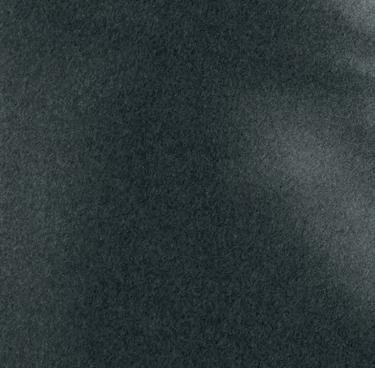











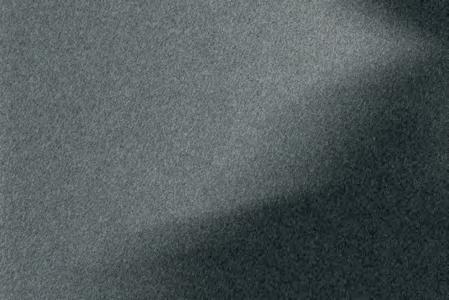













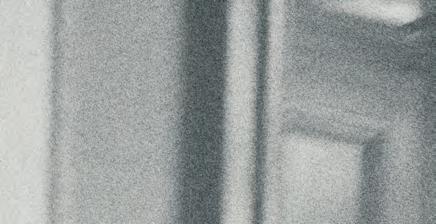
























It takes vision to pursue an inspired collection.










Advice is our craf.

It takes expertise to make it a reality.







Given a uniquely challenging art market, you need expertise and experience to help you build, maintain and plan for a meaningful collection. UBS Art Advisory can work with you to help you realize your singular vision and make your legacy a reality.

Learn more about us at ubs.com/artadvisoryus

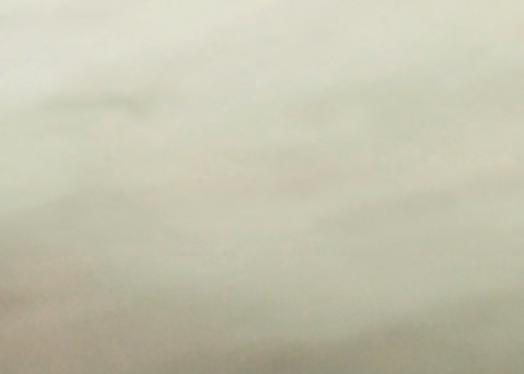



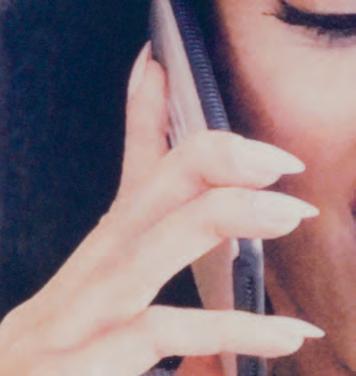










Featuring the fiercely individual practices of emerging artists Shuang Li, Jasper Marsalis and Heji Shin, a trio of forthcoming exhibitions at the Aspen Art Museum explores shared themes of audience, celebrity and image, argues Terence Trouillot
Ye the rapper formerly known as Kanye West, and ex- husband of Kim Kardashian h as been on my mind these past few months. When his permanent titanium veneers, costing a whopping $850,000, made headlines earlier this year, my brain went numb, as if it had neither room for disappointment nor reproach, much less amusement. There was simply nothingness, except perhaps a small sense of relief that his new hysterical act was something mildly innocuous a
reprieve from his toxic and blatantly unhinged antisemitism. In Harmony Holiday’s essay “Ask Me About God: On Ye West”, f rst published online in the Paris Review in 2023, the artist and poet writes that Ye’s “transactional shaming and rehabilitation” is “as close as he can get to intimacy with his public, enacted upon him and then, with himself as accomplice, upon his fans and fanatics.” The nature of contemporary celebrity, the investments made into and the operations of
the mass image, and the ever- evolving relationship between audience and artist, are all themes addressed by a trio of innovative shows by emerging artists at the Aspen Art Museum in the coming months. For Chinese artist Shuang Li whose f rst institutional solo exhibition opened at the Swiss Institute in New York in May and travels to Aspen this year fandom has an uncanny ability to reveal a person’s basest and truest self, while also bringing that person
closer to community and perhaps even love. Steeped in internet culture, Li is f xated speci fcally on the fandom of American pop -punk band My Chemical Romance. Growing up in Wu City in southeast China, Li initially listened to the band’s music to learn English, but her love for My Chemical Romance has grown into something deeper, and more true. In the exhibition’s titular video, I’m Not (2024) which is itself broadcast on a makeshift set of bleachers covered in fabric and resin sheets Li presents
an acapella group, led by a young girl, who recites a Chinese version (written by Li) of the eponymous song by My Chemical Romance. The f lm — a saccharine ode to the band and its in fuence on the artist’s life — is hard to parse through the matrix of detritus and screens that make up the installation. As Legacy Russell makes clear in her manifesto Glitch Feminism (2021), real life can f nd itself in digital skins, leaving the acronym IRL dreadfully obsolete — AFK (Away From the Keyboard) taking its rightful place. I’m Not ofers an insular, oneiric vision of Li’s doting obsession, while at the same time Li embodies the role of celebrity, f attening the dichotomy between that of the entertainer and the entertained. When the German-Korean artist Heji Shin exhibited her photographs of Ye at the Kunsthalle Zurich in 2018, the rapper’s psychobabble and controversial views had reached new heights and were met with public frenzy. Showing the fresh-faced, younger rapper, sporting a hoodie and neon pink hair, and looking stalwart and intimidating, Shin’s images contrasted with the public image; looking back at them, I experience a sense of innocence: a pop star whose bipolar disorder weighed heavily on his conscience and whose vulnerability pierced through his stoic gaze with fury. Alongside the suite of Ye portraits, the artist also presented X-rays of her own body (with her pet dog), uncovering what lies literally beneath her skin. What feels perhaps performative or like an emblematic gesture for a certain kind of vulnerability in Shin’s X-rays, is laid bare in the images of the music impresario; his inner demons are visible across his face — there’s a glint in the eye of pure mischief. Seeking to unsheathe the sharp contours of our psyche, the underbelly of the self, what’s at the core — whether of a celebrity or even herself, the magic of Shin’s images is that as print media — advertisements, fashion editorial — they are often both straightforwardly legible and simultaneously revealing of what lies behind culture’s forward-facing, glossy veneer. Whether it’s her Eckhaus Latta 2017 Spring campaign showing real couples fucking or her 2016 “Baby” series of newborns bloodily emerging from birth canals, there is an obsession of (graphically) presenting what lies beneath the shallow facade of a world covered in lies. A simple gaze inward that has tremendous efect. The works in Shin’s forthcoming Aspen Art Museum show are being made outside the studio, further complicating the relationship between reality and arti fce, subject and artist.
Like Li and Shin, the Los Angelesborn artist Jasper Marsalis endeavors to unearth the realities of what lies behind the construction of a public fgure — something he investigates as both as a visual artist and a musical performer. He also goes by his hip -hop moniker Slauson Malone, and was formerly a member of the avant- garde musical troupe Standing on the Corner; as a visual artist Marsalis makes work that meditates on the relationship between audience and performer, viewer and creator, with a rhapsodic interest in collapsing those distinctions while also musing on their inherent diferences. In his solo show at Kristina Kite in Los Angeles last year, Marsalis forced visitors to enter the gallery through the back entrance, lifting the






curtain, so to speak, on what lies “backstage.” Upon entering, the audience encounters a laptop (Face 1 ), a behindthe -scenes look at what’s feeding and programming both Face 2 , a large LED screen capturing pixelated images of visitors, and Instrument 4, four stacks of speakers amplifying the minutiae of sounds that permeate the gallery (all works 2023). The result is a feedback loop of the visitors’ input that in turn becomes the immediate output of the work.
“My favorite music begins and ends with this tortured erotic ambivalence,” writes Holiday in her 2023 essay, refecting that: “the most efective art is greedy about it, righteous and wicked at the same time, humble and opulent, minimal and spectacular, optimistic and despairing, unrepentant and begging for mercy.” Ye may have leaned too heavily into tortured ambivalence, but I f nd myself still listening to his music. Maybe it’s a quality that all good artists share. Certainly Li, Marsalis
and Shin match Holiday’s description in being unrepentant when it comes to their craft, unapologetic when it comes to their own artistic visions, while showing reverence to their audience, paying them back with kindness and thrills.


























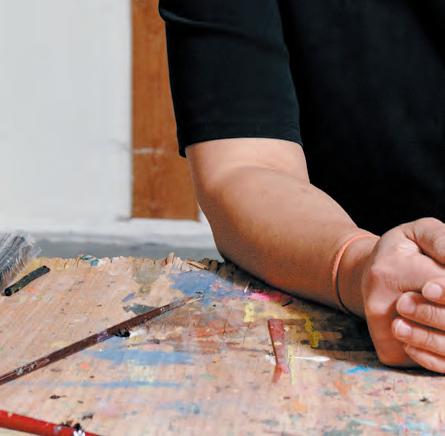






by

The artist has generously donated a new work to support the Aspen Art Museum in honor of ArtCrush 2024.












SUPPORTING ASPE N ART MUSEUM
ARTCRUSH 2024
KATHY BUTTERLY
ALEXANDRE DA CUNHA
SIMON EVANS™
MONIR SHAHROUDY FARMANFARMAIAN
SPENCER FINCH
GAURI GILL
MICHELLE GRABNER
TRENTON DOYLE HANCOCK
FEDERICO HERRERO
YUN-FEI JI
BYRON KIM
MERNET LARSEN
RICHARD LONG
TERESA MARGOLLES
JOSIAH MCELHENY
JESSE MOCKRIN
ESTATE OF LEE MULLICAN
CHRISTOPHER MYERS
JORDAN NASSAR
TUAN ANDREW NGUYEN
KALOKI NYAMAI
SCOTT OLSON
EAMON ORE-GIRON
KATIE PATERSON
NAUDLINE PIERRE
THE PROPELLER GROUP
MATTHEW RITCHIE
HIRAKI SAWA
YINKA SHONIBARE CBE
ELIAS SIME
DIANE SIMPSON
KELLY SINNAPAH MARY
TABAIMO
ALISON ELIZABETH TAYLOR
FRED TOMASELLI
BILL VIOLA
KENNEDY YANKO
XU ZHEN®
























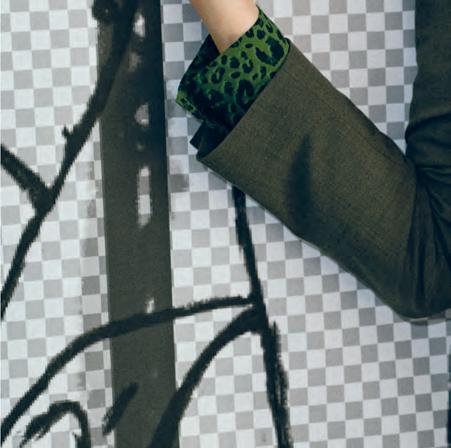

The Move Stetson by Lena Henke is an AAM exclusive: limited-edition pieces made for the Aspen Art Museum by our artist community










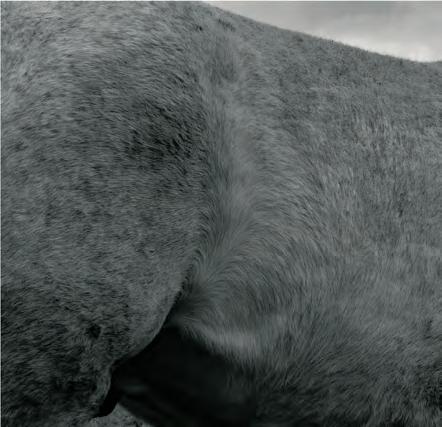



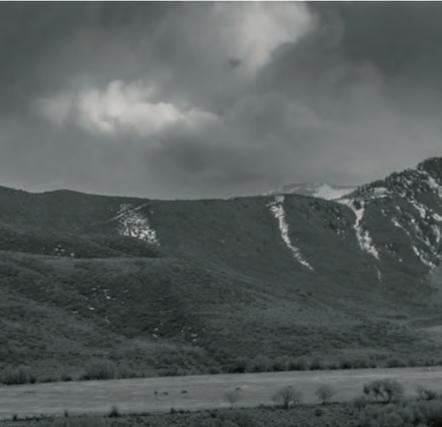



Ryan Trecartin in collaboration with Michael Beharie, Lizzie Fitch, Ashland Mines, Aaron David Ross with Jason Moran, The Aspen Music Festival and School’s Contemporary Ensemble, and more
August 1, 2024
The top of Aspen Mountain
aspenartmuseum.org 970.925.8050
In collaboration with:




